GrillOn! YourGet
NOT YOUR EVERYDAY BACKYARD FARE
PG. 47
IT’S THE PERFECT TIME FOR PEACHES
PG. 33
SUPER EASY SUMMER SALADS
PG. 39
TALKING BABY FOOD WITH JENNIFER GARNER
PG. 10
Natural Supplements for Healthy Aging
YOU’LL NEVER BELIEVE THIS BURGER IS MEATLESS. RECIPE ON PG. 64

NO ADDED sweeteners






Make the Most of Summer
I’ve always liked to set goals. They give me a purpose and keep me motivated. Most recently, I set a goal with two girlfriends to complete a century ride—100 miles on a bike. We participated in an organized event in Santa Fe, N.M., so there was support along the way, including food stops and sag wagons (in case you needed mechanical or other help). My friends and I put in a lot of training before the event, which helped greatly. After it was over, and we were celebrating with margaritas and New Mexican food, we all agreed that although we were excited and satisfied to have achieved our goal, it was the journey—the training and the camaraderie— that was the most enjoyable.
Research shows that goal setting is really, really good for you. “Goals boost productivity and increase likelihood of success,” says Dr. James Rouse, a naturopathic doctor and personal coach. “They also help to improve optimism, focus, resilience and persistence. And studies show goals can improve our health and well-being, too.”
While the start of the New Year is the most common time to set goals, the summer season is a good halfway point to reassess those resolutions— and maybe set some new ones.

Have you been wanting to eat healthier? The bounty of fresh fruits and veggies in summer is a great catalyst. Start with our array of easy, nutrition-packed summer salad recipes, including Wild Rice and Summer Fruit and Mediterranean Spiralized Squash salads, using seasonal ingredients (pages 39-44).
Speaking of seasonal, what’s more fresh and flavorful than juicy summer peaches? Use them in a colorful Southwestern Grilled Peach Salsa or a Peach Habanero Barbecue Sauce on Tempeh Ribs. You’ll be a hit at your next picnic with Peach Sushi Rolls (pages 34-36).
And, of course, what is summer without grilling? We’ve come up with some delicious and nontraditional ideas, such as Red Curry Grilled Trout, Greek Chicken Meatballs, and Grilled Strawberries and Rhubarb Compote (pages 47-51).
One of my favorite recipes in this issue is our nontraditional burger, made with caramelized onions, black beans, portobello mushrooms, and seeds and spices (page 64). Who says you need meat to make a good burger?
So why not set a goal over these next few months to expand your eating repertoire and incorporate at least three different, fresh summer fruits or veggies in your diet each day? One of my favorite ways to accomplish this: Combine some fruit (a banana, berries, a peach or nectarine) and veggies (greens like kale or romaine lettuce), an herb (I like cilantro), plus a pinch of seeds (try chia or flax) in a delicious smoothie. It’s a yummy way to get your goal on!
Rebecca Heaton, Editor editor@livenaturallymagazine.com
BEGIN
Making Food Make Sense
PLUS Talking with Jennifer Garner, empowering kids to eat well, living sustainably and a playbook to aging well.
KITCHEN
Nut Butters and Baby Food

PLUS New cookbooks, cool kitchen gadgets, all about bananas and hydrating foods.

EAT
Dish It Up
Summer is ripe for sweet, juicy peaches. Try them in our flurry of flavorful recipes, courtesy of the budding chefs at Johnson & Wales University.
CONTENTS
54 feature
HEALTHY AGING
Getting older is more than just worrying about money and wrinkles. As you age, you want to invest in health habits to live a long life.
BY NANCY COULTER-PARKERFast & Flavorful
The fresh bounty of vegetables and fruit this season make for the best ingredients in hearty, nourishing and detoxifying salads of all types.
BY GENEVIEVE DOLLHealthy Kitchen
Who wants to cook inside when you can grill? Fire up your grill for an array of creative, tasty recipes with meat, veggies and fruit.
BY KIMBERLY LORD STEWARTAround the World Louisiana’s Cajun and Creole cuisines are a blend of elements from the many cultures that call New Orleans home.
BY REBECCA TREONBOOST
Spearmint
A popular and tasty herb stocked with goodness.
BY KELLEE KATAGIForever Young
Anti-aging supplements to help you tap in to the fountain of youth.
 BY KAREN MORSE
BY KAREN MORSE
TRY
Caramelized Onion and Portobello
Mushroom Burgers
Who needs meat when you have hearty ’shrooms and beans in a burger?
BY DINA DELEASA-GONSARrecipe index
Arugula and Roasted Carrots with Creamy Cilantro-Lemon Dressing 44
Banana Tea 20
Black Bean, Bell Pepper and Mango Salad with Chipotle-Lime Dressing 40
Caramelized Onion and Portobello Mushroom Burgers 64
Fire-Roasted Fennel, Radishes and Potatoes 48
Greek Chicken Meatballs with Eggplant and Zucchini in a Pita 50 Grilled Peach Salad 36
Grilled Strawberries and Rhubarb Compote 51
Mediterranean Spiralized Squash Salad 42
Peach Sushi Rolls 36
Red Curry Grilled Trout 47
Southwestern Grilled Peach Salsa 36
Tempeh Ribs with Peach Habanero Barbecue Sauce 36
Wild Rice and Summer Fruit Salad 39







SHOP OUR RECIPES ONLINE

Part of the Live Naturally family of Kroger magazines
SUMMER 2018 livenaturallymagazine.com
CO-FOUNDERS

Drs. James and Debra Rouse
V.P./GROUP PUBLISHER
Deborah Juris
EDITOR
Rebecca Heaton
ART DIRECTOR
Lindsay Burke
DESIGNER/DIGITAL
Shannon Moore
ASSISTANT EDITOR
Kellee Katagi
DIGITAL EDITOR
Jennifer Davis-Flynn
DIGITAL PRODUCTION ASSISTANT
Ashley McLeod
COPY EDITOR
Julie Van Keuren
MARKETING OPERATIONS MANAGER
Susan Humphrey
CONTRIBUTING WRITERS
Save your favorite recipes to your own personal Recipe Box and order them online, anytime, with one simple click.

It’s easy. See a recipe you like? Click the “Buy Ingredients” button at the top of the recipe. Add as many recipes as you’d like. Manage your shopping list to add or remove items, check prices and even swap brands.


When you’re ready to order, click the “Complete My Shopping List” button at the bottom and we’ll send your shopping list straight to your local store.
Nancy Coulter-Parker, Dina Deleasa-Gonsar, Genevieve Doll, Kellee Katagi, Karen Morse, Kara Nielsen, Debra Rouse, James Rouse, Kimberly Lord Stewart, Rebecca Treon
CONTRIBUTING ARTIST AND STYLISTS
Aaron Colussi, Eric Leskovar, Nicole Dominic
ADVERTISING SALES
Deborah Juris, Tracy McIlroy
PUBLISHED BY
When you create an account online at LiveNaturallyMagazine.com/email-sign-up
PRESIDENT
Brendan Harrington
BEGIN
the unique design of the body God created, you have a blueprint to determine what you’re supposed to be eating.
You support following a plant-based diet. Why?
Food Fads: FACTS & FICTION
In his new book, Dr. David Friedman gives a common sense meets common science approach on how to eat right.
BY REBECCA HEATONAs Lifetime television’s morning-show health expert and a syndicated radio host, Dr. David Friedman interviews experts about the latest health and diet information. But over the years, their opinions have often been contradictory. In Food Sanity: How to Eat in a World of Fads and Fictions (Turner, 2018), Friedman uses a unique approach to answer the burning question: “What the heck are we supposed to eat?!”
What inspired you to write this book?
I wrote Food Sanity after 18 years of frustration I endured as a syndicated TV and radio health expert. I’ve interviewed hundreds of scientists, doctors and authors, with the goal of sharing information that would help my audience reach their optimal health. Unfortunately, that’s not what


happened. Instead, every guest would contradict the previous expert, leaving everyone—including me— more confused. While most health experts have differences of opinion, there is one thing they all agree on: Food has the power to heal the body or make it sick. The key is figuring out what should be at the end of our fork.
Please explain the “DIG” method in your book. I use a common science meets common sense approach called DIG—Discovery, Instinct and God—to help you decipher what you should and shouldn’t be eating.
Discovery is the science behind what you are reading or hearing from experts. Their opinions change frequently, but if the science is based on unbiased research, it gives us the most current objective viewpoints. Instinct helps you get in touch with, and give credence to, what your gut is telling you, so it can be your guide. God is a way of saying we need to make sure the facts as we interpret them follow the blueprints of our creation. God could represent anything you believe in—a higher power, Mother Nature, etc. I use the word “God” when talking about how our bodies and minds are composed, and the nature or entity that formed them. By taking the discoveries, adding your instincts and seeing if they correlate with
If you want to grow old and be healthy, learn from those who have achieved this goal. I researched some of the healthiest and oldest people on the planet, men and women who thrive at 106, 116, even 125 years of age. The majority eat mostly plant-based foods—whole grains, fruits, vegetables and beans—with no exposure to processed foods and chemical additives commonly found in the standard American diet. Many of today’s popular diets, including ketogenic and paleo, advocate a diet high in animal foods, yet a plant-based diet has been linked to a lower risk of obesity and reduced risk of many chronic diseases, such as heart disease, type 2 diabetes and cancer.
So what should and shouldn’t we be eating?
It’s important to give your body the right fuel. Unfortunately, we can’t rely on the latest fad diet or the ever-changing “eat this, not that” news. It really comes down to trusting your gut. Look at labels, and if you see chemicals you can’t pronounce, what does your gut tell you? Eating right can be confusing, but if you apply the current, unbiased common science with some good ol’ common sense, you can figure out what you should be eating.
Sunglasses Made from Plants?!
Plant-based eating is one of the fastest-growing lifestyle and diet movements.
In fact, veganism has grown by 600 percent in the U.S. in just three years, according to Top Trends in Prepared Foods 2017, a report by market-research firm GlobalData. But there’s more to plant-based living than just food. Take sunglasses.
Zeal Optics, makers of eyewear for outdoor adventures, uses plant-based materials in all of its sunglass frames and lenses. The main ingredient is a castor-based resin that is heated to create a polyamide and then formed into lightweight and durable frames and lenses. The process is similar to creating nylon; however, most nylons use petroleum-based resins.

The sunglasses come in an array of fun, trendy and functional styles, with different lens shades for different conditions. And if you lose them in the woods, they will gradually break down and compost. Power to the plants. Check out the various styles at zealoptics.com.

TIME TO TRY TART CHERRY
Tart cherry, studies show, is powerful in more than just flavor: It can reduce inflammation, decrease muscle soreness, boost immunity and improve sleep.
Beverage company Cheribundi packs the nutrition into its new 100% Tart Cherry Juice, which provides the equivalent of 60 healthful cherries in just 8 ounces, with no added sugars or other ingredients. Athletes in particular enjoy the benefits. Cheribundi sponsors 220 college and professional teams (NFL, NBA, NHL, MLB) and individual athletes who drink cherry juice both before exercise to prevent soreness and after to relax before bed.

The company sources all its fruit from U.S. growers and produces its juice through a completely sustainable manufacturing process at its factory in Upstate New York. For example, Cheribundi shares all the fruit pulp with local farmers for animal feed, and cherry pits are used to fuel tractors at local cherry farms. Learn more at cheribundi.com.
DON’T MISS IT!
Catch our interview with Cheribundi athlete and ambassador Aly Raisman in the next issue!
Interstitium: Your Stealth Organ
News flash: Despite what we’ve thought our whole lives, skin may not be the body’s largest organ. Some scientists now think that designation belongs to the interstitium, a mysterious and complicated layer of our body that appears to flank all other organs—including the skin.
If that’s indeed true, the interstitium is our largest organ by volume. Which raises a couple of questions: What is the interstitium? And how have scientists missed it till now?
In the journal Scientific Reports, researchers describe the interstitium as “a previously unrecognized, though widespread, macroscopic, fluid-filled space within and between
tissues.” It’s made up of collagen bundles surrounding fluid pockets that may contain up to 20 percent of all the fluid in our bodies. Before researchers discovered it by examining immediately frozen biopsy tissue, it was assumed to be dense connective tissue—not the unique, malleable network that it is.

Much more research is needed to determine the interstitium’s purpose, but scientists suspect it may serve as a shock absorber for other organs. They also think it might be a mechanism for cancer to spread beyond the organ where it originates—which makes the study of this “new” organ seem imperative indeed.
—Kellee KatagiHot Stuff
From mild to hot, hot, hot, Burns & McCoy’s awardwinning creations please all palates. Since 2014, the familyowned company in Fort Collins has been concocting all-natural hot sauces, salsas, dressings and drink mixes with a kick. “We’re all foodies, so our products go flavor-forward first, heat second,” says CEO Jay Turner.
Turner and the team—his wife, mother, sister and brother-inlaw—are proud to be hands-on. “We manufacture and source everything ourselves,” he says, adding, “We like being in the kitchen and working on different flavor profiles than what most Coloradans are accustomed to.” That means sauces and salsas with a twist.
“Our Especia Roja Hot Sauce, for example, is a very authentic southeastern Yucatan, Mexico, flavor, with our spin of roasted pumpkin seeds and cumin,” explains Turner. “And our Tomatillo Jalapeno Mint Salsa has added ginger and mint for a more unique flavor profile.” He recommends using it as a salsa, as a topping on pork tenderloin, or even as a base on pizza.

Turner is also proud of Burns & McCoy’s 36 international awards, including the prestigious Screaming Mi Mi, “the ultimate award in the hot sauce industry.” Visit burnsandmccoy.com for more, including tasty recipes.

Healthy Sports Nutrition for All
What began as energy drink mixes and bars made from scratch for the Garmin professional road-cycling team has morphed into a line of healthy nutrition products for everyone, from everyday to elite. In 2012, exercise physiologist and sports scientist Allen Lim launched the aptly named Skratch Labs in Boulder, makers of natural sports nutrition, hydration and recovery foods and drinks.
“When I worked with the Garmin team, the athletes were often complaining that energy bars made them sick; they were dry and bland. And sports drinks were too sweet and hurt their guts. The products were all too scientific with too many chemicals,” says Lim. “So, I started making them food and drink from scratch.”
He used a rice cooker
and made rice cakes flavored with Bragg Liquid Aminos, eggs, bacon and maple syrup. He developed sports drinks with freeze-dried fruit and less sugar. Soon, other athletes were asking for his creations. “I never intended to start this company; I was just trying to meet the demands for some of the hardest races in the world,” he says.
Today, Skratch Labs offers a line of natural sports drinks, energy chews and, the latest addition, plant-based bars, all using simple ingredients. “We are trying to create natural alternatives to the science-driven sports nutrition world without the scientific taste,” says Lim. “Our purpose is to make people better by solving nutrition problems associated with an active lifestyle.” Learn more at skratchlabs.com.




Body of Water
Premium bottled waters offer an array of styles and benefits for the thirsty season.
BY KARA NIELSENDuring the hot summer months, it’s important to stay hydrated. But reaching for a bottle of water has gotten complicated. Water—that most basic, nourishing substance—comes in so many forms, including alkaline, electrolyte-rich, fortified, caffeinated, and even with an extra H or O. These waters are part of the growing enhanced-water trend—premium bottled water with a little something extra.

ALKALINE.
One common type is alkaline waters, which have a pH higher than regular drinking water. The popular Essentia has a pH of 9.5, compared with regular water, which comes in at 7—right in the middle of the 1–14 scale. Also called ionized water, it’s said to improve our energy and balance a body’s pH levels. Waiākea Hawaiian Volcanic Water, naturally filtered through volcanic rocks, has a pH of 8.8, plus natural electrolytes. Waiākea comes from a pristine source in Hawaii, an alluring benefit in an era when water safety is a concern.
ELECTROLYTES
Electrolytes, typically in sports drinks and coconut water, are widely present in enhanced waters, a boon to those looking for flavorless, zero-calorie replenishment. Nourishing electrolyte minerals, such as potassium and sodium, provide what a body needs after heavy sweating. Sodium helps prevent dehydration, so these beverages are best before an activity. Nestlé Pure Life, LIFEWTR and CORE Hydration are just a few examples.
HYDROGEN.
A newer variation is hydrogen water. Inspired by a Japanese trend, these products feature extra hydrogen, believed to boost endurance and energy and provide antioxidants. HTWO Hydrogen Water comes in a pouch to prevent hydrogen from escaping the package. For maximum hydrogen benefit, it needs to be consumed within 30 minutes of opening. On the other side of H2O is oxygen, plentiful in OXiGEN water, which features two bonded 02 molecules to create a stable 04 molecule that stays put in the bottle to provide extra energy. There is little hard science to back up most enhanced-water claims, but that isn’t slowing down this energetic trend. Any water is welcome on a hot day. And if a bottle isn’t handy, there is always that summertime favorite, the water hose.
Fight Food Waste
Become a food waste warrior with these easy-to-follow tips. Plus, great green lunchboxes.
BY REBECCA HEATONAmericans throw away nearly 80 billion (!) pounds of food a year. Yet less than half of the population is aware that food waste is such an enormous issue, according to a survey by Brian Roe, professor of agricultural marketing and policy at The Ohio State University and faculty lead for the university’s Food Waste Collaborative. Roe offers the following tips, borrowed from the U.S. Environmental Protection Agency’s Food: Too Good to Waste guide.
Shop Smart
Think about how many meals you’ll eat at home this week and how long before your next shopping trip.
Next to fresh items on the list, note the quantity you need or number of meals you’re buying for.
Shop your kitchen fridge and cupboards first, and note items you already have.
Smart Prep
When you get home from the store, take the time to wash, dry, chop, dice, slice and place your fresh food items in clear storage containers for snacks and easy cooking.
Befriend your freezer, and visit it often. Freeze food such as bread, sliced fruit or meat that you know you won’t be able to eat in time.
Cut your time in the kitchen by preparing and freezing meals ahead of time.
Prepare and cook perishable items; then freeze them for use throughout the month. For example, bake and freeze chicken breasts, or fry and freeze taco meat.
DITCH THE PLASTIC SANDWICH BAGGIES FOR AN ECO-FRIENDLY LUNCHBOX
Intelligent Design

Beautifully designed in a sleek bamboo case, the Prepd Pack has three BPA-free, dishwasher- and microwave-safe containers, along with a three-piece cutlery set, so you’re always ready to eat. Download the free Prepd app for a library of recipes tailored to fit a range of diets, appetites and health goals—and the lunchbox’s modular containers. $69, getprepd.com
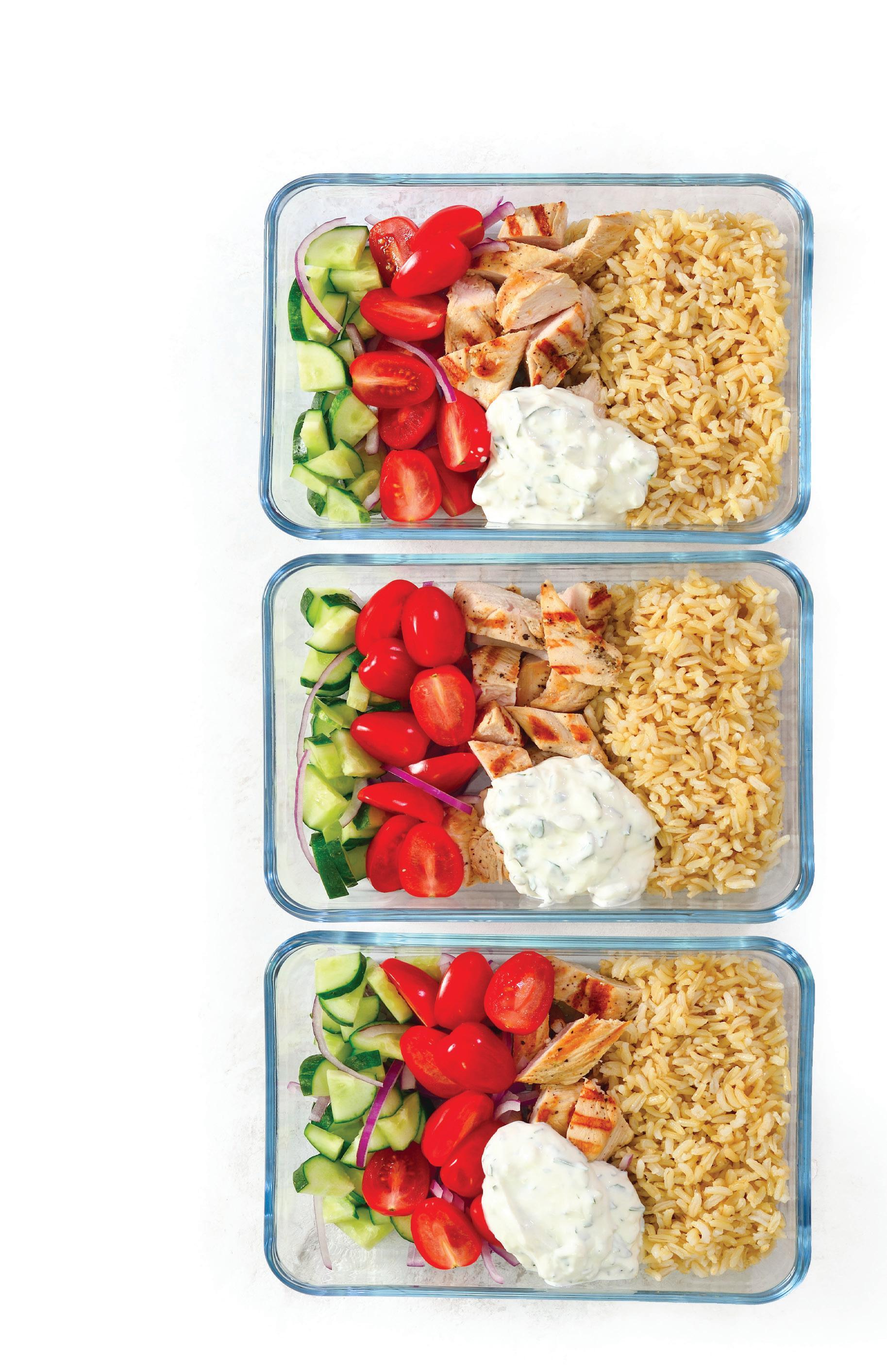
Multipurpose Packing
The Tri Bento threetiered lunchbox from ECOlunchbox has three containers— two 12-ounce, one 14-ounce—to store your “courses.” Made of durable and dishwasher-safe stainless steel, this lunchbox is also great for carrying snacks…and camping, too! It’s safe to heat food in the containers over a camping stove. $26, ecolunchboxes.com


Talking with Jennifer Garner of Once Upon a Farm
Even as an award-winning actress and busy mother of three, Garner has found the time to add something to her plate—and to many other plates as well: a new baby-food line.
BY REBECCA HEATONShe is best-known for her roles on TV and the big screen, but Jennifer Garner is also passionate about healthy, good-tasting food. Her latest adventure is as cofounder and chief brand officer of Once Upon a Farm, makers of organic, cold-pressed baby food, which recently launched in Kroger. We caught up with her to learn more. »


When you were growing up in West Virginia, your mom always had a big vegetable garden. Is that how you were influenced to eat healthy?
I don’t know if my mom was preparing fresh food with health in mind. She grew up on a farm during the Depression, so to her, it made the most sense that growing and cooking your own food is more cost-effective than buying prepared food. She never understood why people don’t grow more to have to buy less. She would buy one roast and make three meals for five people; she could really make things stretch. I think she appreciated that what she was feeding us was healthy. We always wolfed it all down. Although I confess we were always begging for Triscuits and the cheese with wax on the outside!
How did you get connected with Once Upon a Farm?
For a long time, I’ve been looking for a brand that I could really dive in to and work with in a bigger way. I’m always wanting to expand my knowledge base and be outside my comfort zone. We had an early exploratory meeting scheduled, and the owners [Cassandra Curtis and Ari Raz] asked if I minded if John Foraker, who was then at General Mills and on Once Upon a Farm’s advisory board, could join. We were on the same page of our vision of what a company could and should be: social change and justice, and how business can drive social change. We also agreed about the need for Once Upon a Farm and fresh baby food in the world. At the end of the meeting, I told John, “I’m in if you’re in.”
The brand makes perfect sense to me. I did make my kids food, but it wasn’t easy. There were times when I wanted to reach to the store, but what you could buy and what I was making at home didn’t look or smell the same. The store-bought tasted like baby food, but what I was making tasted like real food. I’ve been asking myself, “What have we been doing all this time?” It’s kind of crazy what we’ve grown to accept as normal for our babies.
You’re a mother of three. Tell me about what you and your family typically eat. Are your kids interested in cooking and healthy, natural foods?
My three kids all like to help in the kitchen. As a mom, I find that I get into different “spells” with them. We
recently went through a spell where one child helped make dinner, one helped set up, one helped do dishes after. When helping cook, they have the best time; they’re willing to try more things at home. And they all love to bake. I have one daughter who will sometimes have a pop-up restaurant with friends over called Casual Chic. We recently had a surplus of eggs from our chicken, so my daughter called her pop-up Casual Chick. She made a gorgeous frittata and friedegg sandwiches. It’s nice to see them with their friends and know that they’re competent.
Tell us about your mom’s family farm in Oklahoma and how it’s being converted to organic to grow produce for Once Upon a Farm.
It is well underway. The farm is naturally organic; no pesticides have been used. My Uncle Robert has been getting everything ready, and he said it’s looking beautiful. It’s certainly not been a celebrated piece of land in the past, but it’s been in the family for the last 100 years. It will contribute to our produce; next spring we’ll be harvesting persimmons, blueberries and kale. My mom is beside herself about it; I have not heard her this excited about anything for a long time. It’s all she can talk about!
Life is busy! How are you balancing being a mother, an actor, and a cofounder of a growing food company—and also taking time to take care of yourself?
There is no such thing as balance! [laughs] The sooner you can let go of the idea that everything is going to work out perfectly, you have to forgive yourself when kids go by the wayside for work and vice versa. I do love those days when, oh my gosh, I had a minute alone, I got to cook, I saw girlfriends, and I fit in a workout. But the secret is no secret. It’s intense scheduling, and I’m in the Olympics of scheduling: the kids, my girlfriends, exercising, working in the garden. It’s really ridiculous, but I think that, in general, this is the case with all working moms.
Are you involved with product development at Once Upon a Farm? Any new innovations coming out?
One of the most fun things for me is to be part of the conversation.
Cassandra is like a fairy in the kitchen. She comes up with a hero product, and it is incredible. We have our current lineup of foods and are about to have more toddler blends, too. We’re excited about a fun flavor called Peter Banana Pumpkin Eater, which is exclusive for Kroger. It’s delicious!
That’s a fun name! How have you all come up with other flavor names?
When it comes to naming, everyone geeks out. I love to be in those conversations. We have such a great start with the name of the company; I think there is a magical storybook element to it. Our name kind of guides us to where we want to go.
You seem to really enjoy being a part of this venture. Is there anything else you would like to share?
The most important thing is that we want to offer a fresh, healthy, fantastic alternative to moms who are so busy and wish they were making homemade baby food every day. We are also

going to continue offering recipes for busy moms. When I made my kids’ foods, I didn’t blend in extra things for development and health. It’s so gratifying and important to be able to offer products with good ingredients.
I am also loving it when people come up to me and, instead of asking about movies I’ve been in, they say that they have a baby or toddler and he or she can’t get enough of our food. That makes me so happy that kids are excited to see our pouches. They have great feelings and memories of food with texture and taste. It’s thrilling to be part of a great, fun, smart experience and be part of a like-minded team working to the same goal.
I grew up going to Kroger, riding in the grocery cart. I knew all of the checkers at the registers. I can’t wait to go to my hometown Kroger in West Virginia and see the pouches in the refrigerator section. I just know that it’s going to be much more meaningful than I could ever have imagined.
The most important thing is that we want to offer a fresh, healthy, fantastic alternative to moms who are so busy and wish they were making homemade baby food every day.
The Power of Kids
Peer
BY KELLEE KATAGIIt used to be that each generation had a handful of child stars, usually made famous by movies or TV—think Shirley Temple or Macaulay Culkin or the Mouseketeers. Today, with the rise of YouTube, “reality” shows and the viral quality of social media, kids have many pathways to fame. A growing number of them are becoming positive influencers, inspiring their peers to live sustainably, treat others kindly or eat nutritiously. And some companies are taking notice.
Incorporates nutritious ingredients like chickpeas and red lentils. Learn more at kashibykids.com.
Take Kashi—maker of responsibly sourced, whole-grain-based products—which recently tapped into this movement to create Kashi by Kids Super Food Combos breakfast cereals, debuting on shelves this summer. Instead of merely running a last-stage product by a kid test group and making a few tweaks, Kashi brought young people into the trenches.


They started by identifying a dream team of sorts: Generation Z tweens and teens who were already calling their peers to better things (see “Kashi Kids All-Stars”). “It was a huge surprise how many kids out there are actively doing something to change the world,” says Kashi’s Megan Hagist, who worked with the team. “It really speaks to this up-and-coming generation and how aware they are becoming of the effect of the food we eat and also the environmental impact we’re having.”
Kashi involved the self-named Kashi Crew in every aspect of development, from initial
KASHI KIDS ALL-STARS
brainstorming and experimenting to testing samples to designing the packaging. “We didn’t make any decisions without them,” says Jenna Gavin, associate brand manager for Kashi.
Kashi Crew member Haile Thomas, 17, agrees. “The team at Kashi had us fully immersed in the entire process of creating our cereal, as well as the important factors like quality, organic ingredients and sustainability,” Thomas says. “The true engagement and trust they’ve given us has been refreshing. It’s amazing to see such a big company like Kashi embrace the views and voices of the next generation.”
So, what’s next? The Kashi Crew team hasn’t retired yet—they’re busy identifying new ways to inspire their peers to eat better and do their bit to make the world a better place.
HANNAH TESTA AGE 15

Founded Hannah4Change –focused on planet sustainability (hannah4change.org)


CHARLOTTE D’ARABIAN AGE 12

Season 3 of Food Network’s Kids Baking Championship
VALENTINE D’ARABIANM AGE 13
Self-proclaimed “health nut”
Founded HAPPY, which provides plant-based nutrition and culinary education for kids (thehappyorg.org)

pressure isn’t always bad—meet young people who use their influence to promote healthy eating and eco-conscious living.

















THE FUN FACTOR
BY DR. JAMES ROUSEEXERCISE
Too often, people look at exercise as a chore. What happened? When did the idea of running around playing get relegated to a treadmill or a fitness class? When did we start dreading breaking a sweat? It’s time to treat exercise as play.

Research from the University of Michigan suggests that when we are exercising for the sheer sake of joy and for how wonderful it makes us feel after we’re done, our tendency to stick with it increases exponentially. But when we exercise specifically to lose weight or improve heart health or prevent disease, we don’t typically stick with it. Unfortunately, the latter reasons are why most of us work out.
Instead, give yourself permission to take a cue from your inner child and simply enjoy exercising and moving— your tendency will shift to never wanting to stop!
Our culture is suffering from an epidemic—I call it chronic adult-itis, or stressing about aging. Despite the constant barrage of news and products to counter getting older, healthy aging comes down to something quite simple: playfulness. Here’s my playbook of strategies on how to accomplish this every day.
FOOD
What is more fun and playful than preparing and eating fresh, colorful foods? This is a great time of year to experiment with fresh produce. Try different fruits and vegetables in salads. Blend up smoothies. Make it a goal for each week of summer—and throughout the year—to fit in as many colors of foods as possible. The more color and variety in your diet, the greater the benefit to your genes and your genius.
According to research by Dean Ornish, M.D., founder of the Preventive Medicine Research Institute, the more our diets are plant-based, the greater our ability to fight the fire of inflammation, age more beautifully, and live longer and stronger.

The more we stay connected to things that bring us joy, the better we will be at winning the game of life.
RELATIONSHIPS
One of the best pro-aging strategies is spending time with friends and loved ones. We know from research that the quality of relationships we surround ourselves with can affect everything from our genes to inflammation to longevity. Good relationships open the door to play opportunities, too.
For example, my family and I take our dogs for a walk every night after dinner. Do this yourself: Walk or simply spend some time outside with a spouse, other family members, a friend, a pet. The more companions you take with you, the more awesome points you get on the board.
There’s a powerful energy called “moral and emotional contagion” that compels the positive forces around us to attract us and raise us up. We tend to emulate what’s around us, and our body and mind copies what it sees and feels. Choose to “decorate your life” with people who are light, loving and hopeful. Use them as mentors, coaches and inspirations, because they know the secret of life.
A playbook to age well and, most importantly, have fun while doing it.The cofounder of Optimum Wellness, Dr. James Rouse has a doctorate in naturopathic medicine. He is an inspirational speaker, personal coach, author and the cofounder of Skoop, a line of powdered superfoods.
Higher potency fast-acting liquid soft-gels
















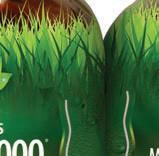










Super SUMMER
Seven ways to optimize your health as the temperatures rise.
BY DR. DEBRA ROUSE, N.D.Summer fun means a multitude of activities in the heat and sun: water, picnics, family get-togethers, travel, gardening and more. To make the most of the season, stay healthy with the following tips.
1 STAY AHEAD OF HYDRATION.

Don’t wait until you feel thirsty to drink water. By the time you recognize your thirst, chances are you’re heading toward dehydration. Water helps maintain body temperature, which is key during warmer weather. One indicator of hydration is the color of your urine; it should be pale yellow. If it becomes dark yellow or odorous, you likely need to drink more.
2 PROTECT YOUR EYES.
Exposure to early-morning sunlight without sunglasses but not staring directly at the sun can benefit the eyes and the pineal gland (in the brain), positively impacting circadian rhythms (aka sleep-wake patterns). After 10 a.m., wear sunglasses to block ultraviolet A and B rays and protect your eyes from sun damage—and from crow’s-feet around the eyes, too.
3 GET OUTDOORS EARLY IN THE DAY.
4 GO EASY ON ALCOHOL.
As tempting as it is to splurge on beer or cocktails when lounging or playing in the sun, it is best avoided. Alcohol can be dehydrating because it acts as a diuretic, leading to increased urination and sweating. If you get intoxicated, you may lose track of the time you’re out in the sun, increasing your risk of sun damage and sunburn. Women tolerate alcohol differently than men, and drinking alcohol is associated with increased health risks in women, including heart disease, breast cancer and liver disease.
5 DRINK GREEN TEA.
Iced tea is almost synonymous with summertime. Consider making iced green tea. Numerous studies show that catechins (antioxidants) in green tea may protect the skin from harmful UV rays. The catechin responsible for sun protection is called epigallocatechin gallate (EGCG); it also has other benefits, including controlling blood sugar, boosting metabolism and preventing certain cancers.
6 EAT YOUR RED, WHITE, BLUE AND GREENS.
Summer may be traditionally about hot dogs and cherry pie, but it should really be about the fresh, colorful fruits and vegetables that abound this time of year. Eating a variety of colors— think cherries, berries, lettuces, cauliflower, broccoli, summer squash—will keep you feeling (and living) longer, stronger, younger, healthier and happier.

Dr. Debra Rouse is a registered naturopathic doctor and member of the Institute for Functional Medicine. She is also cofounder of Optimum Wellness . drdebrarouse.com

A little sun exposure is an excellent way to get vitamin D, and it’s a natural mood booster. Ideally, limit sun exposure to the hours before 10 a.m. and after about 3 p.m. Between those hours, when UV rays are at their strongest, wear at least 15 SPF sunscreen and reapply every two hours to avoid sun damage.
7 DON’T LOUNGE AROUND IN A WET BATHING SUIT.
Pools, hot tubs, lakes and the ocean are breeding grounds for bacteria. Although chlorine is meant to kill such bacteria, it can also wipe out the body’s good bacteria and be a serious irritant for not only the vagina, but also the skin. Instead of avoiding water altogether, shower before and after you soak, empty your bladder before and after you soak and, if possible, change out of your wet bathing suit into some cotton underwear and light, breathable shorts or a sundress.








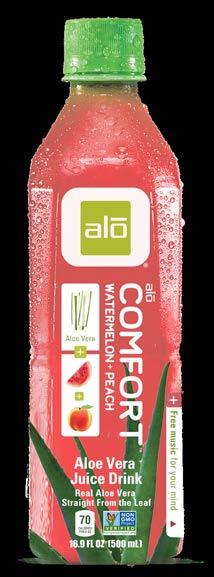

Navigating Nut Butters
Creativity, flavor and nutrition collide on today’s nut-butter shelves.
BY KELLEE KATAGIOnce upon a time, you had two nut butter choices: creamy peanut or crunchy peanut. Today, the nut-butter aisle is awash with options—many of which are both creative and healthy.
Peanuts are just one of many base ingredients you’ll find. A few of the alternatives—like almonds or sunflower seeds—have been around for a while, but some of the newer selections might surprise you: say, hemp seeds, or even chickpeas, which, like their cousin the peanut, fall into the legume family. Other trends include mixing a variety of nuts and seeds together, adding flavorings beyond sugar or honey, and delivering in a powder form. Navigating these options can feel overwhelming, so use this chart as a jumping-off point.
Q:CREAMY or CRUNCHY?
A: WOMEN AND CHILDREN TEND TO PREFER CREAMY, WHILE MEN LEAN TOWARD CRUNCHY. ALSO, MORE EAST COASTERS OPT FOR CREAMY, WHILE THOSE ON THE WEST COAST ARE MORE LIKELY TO REACH FOR CRUNCHY.
SOURCE: NATIONAL PEANUT BOARD
Why we like it: This is peanut butter at its best: organic, creamy, and easy to stir and spread. Plus, it manages a rich and yummy flavor without any added sugar. It’s good for the planet, too: The company matches 100 percent of its electricity use with certified renewable energy.
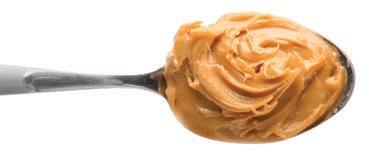


Our tasters say: “Full-flavored; ideal for any use.”
Bonus points for: kosher, low in sugar, non-GMO, organic
Also try: Crazy Richard’s 100% Peanuts
LET’S TALK NUTRITION
FLAVORED BUTTERS
OUR
Peanut Butter & Co. Dark Chocolate Dreams
Why we like it: Peanut butter and chocolate are meant to be together— especially when the chocolate is dark and rich, the ingredients are simple and natural, and there’s no hydrogenated oil involved—just certified sustainably harvested palm oil. And did we mention it’s delicious?
Our tasters say: “Especially good on bananas or pancakes.”
Bonus points for: non-GMO, vegan
Also try: MaraNatha Coconut Almond Butter
In its purer forms—minus the loads of added sugar and the hydrogenated oils that some brands include—peanut butter has a lot going for it nutritionally. Most varieties contain 6 to 8 grams of protein per serving, as much as or more than an egg. A serving will also deliver 8 to 13 percent of your daily fiber needs; more than 20 percent of your daily manganese and niacin requirements; and hearty doses of vitamin E, magnesium and phosphorus. Almond butter has a similar nutrition profile, but with potentially higher levels of vitamin E, manganese, magnesium and phosphorus in some varieties.
HOW MANY ALMONDS DOES IT TAKE TO MAKE A JAR OF NUT BUTTER?
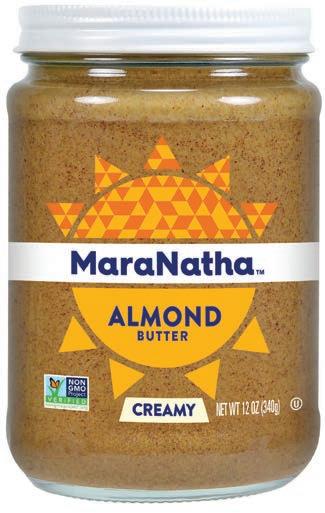
A: THERE ARE 400 TO 450 ALMONDS IN A 16-OUNCE JAR OF ALMOND BUTTER.
MIXED NUTS
Why we like it: Truly original! NuttZo blends seven nuts and seeds for a taste all its own and a hearty, crunchy texture. An upside-down-storage design makes for easy stirring. The price is a bit steep, but a portion of the proceeds benefits kids in orphanages.

Our tasters say: “I love the touch of saltiness.”
Bonus points for: low in sugar, non-GMO, vegan
Also try: Wild Friends Almond Cashew Super Butter
ALMOND

OUR PICK.
POWDER
OUR PICK.
Why we like it: This super-smooth spread somehow achieves a pleasantly sweet taste with only 1 gram of added sugar, the evaporatedcane variety. It uses sustainably sourced palm oil, is made in small batches and—hallelujah!—does not require stirring.
Our tasters say: “It’s eat-straightfrom-the-jar good!”
Bonus points for: low in sugar, non-GMO
Also try: JIF Natural Almond Butter

HAVE NUT BUTTER, WILL TRAVEL
Why we like it: With only a third the calories of regular peanut butter, PBfit allows you to enjoy traditional peanut butter taste—without the calorie commitment. And we love that it’s made from just three ingredients: peanuts, coconut palm sugar and salt. Ideal for mixing in smoothies, shakes or batters.

Our tasters say: “I was surprised: It was tasty even in a fruity smoothie!”
Bonus points for: kosher, non-GMO
Also try: PB2 Powdered Peanut Butter
For people on the go, nothing beats single-serve nut-butter squeeze packets, which are taking up more and more real estate on store shelves. Some packets—like those from Justin’s and Wild Friends—serve up straight nut butter, while others mix in additional goodies (Exhibit A: RX Nut Butter, whose packets include a blend of peanuts, egg white, dates, coconut oil and sea salt). Companies such as PBfit, Crazy Richard’s and Peanut Butter & Co. also offer powdered peanut butter in single-serving packets.

All About Bananas
When it comes to diverse uses and varied health benefits, the banana is nature’s utility tool.
BY KELLEE KATAGIFor many of us, mashed bananas were our first solid food. Turns out, that was a great choice. This versatile fruit is stuffed with nutrients that, interestingly, can also help us on the other end of our life spectrum—old age— when our electrolyte balance can easily get askew. Read on to learn more about why we’re bananas for bananas at every life stage.
What’s in It?
One medium-sized banana contains nearly a quarter of your daily vitamin B6, 17 percent of your vitamin C and 12 percent of your fiber. As for minerals, it provides manganese (16 percent DV) and potassium (12 percent DV), as well as magnesium, phosphorus and calcium. It also serves up antioxidants, such as dopamine and catechins.
What Does It Do for You?
To start, it shows your heart some love: The FDA recommends regular banana consumption as an antidote to high blood pressure because its potassium content can offset high sodium intake. The flavonoids found in bananas have also been linked with a lower risk of heart disease. And bananas, like most produce, contain compounds that fight oxidative stress. Although there’s not much hard science to prove it, some experts say
OUR 5 FAVE USES FOR A BANANA

Mash it and stir into pancake batter or oatmeal for a welcome dose of sweetness and moisture.
Eat it before a workout. Bonus if you dip each bite in nut butter first. (Visit pages 18-19 for great nut-butter selections.)
Break it into bitesized pieces and freeze for use in smoothies.
Grill it for a healthy dessert. Visit livenaturallymagazine.com and search “grilled bananas” for a yummy recipe.
Make a banana pop: Insert a popsicle stick into the bottom of the banana; dip it in melted dark chocolate; roll it in unsweetened coconut, nut pieces or another topping; place in fridge for at least 30 minutes, or until chocolate hardens. Cut banana into pieces for smaller pops.
that eating a banana before bed could help you sleep better at night, thanks to its mix of minerals and amino acids.
Bananas may especially benefit athletes. Researchers at Appalachian State University found in multiple studies that the fruit can improve both sports performance and recovery. Most interestingly, they discovered bananas had components that may act as a COX-2 inhibitor (using the same mechanism as ibuprofen and other painkillers) to reduce post-exercise soreness and inflammation. (Disclaimer: Dole, a banana producer, funded the study, but did not participate in its execution.)
Bedtime Banana Tea
Tonight, try this simple, sleep-promoting concoction, which taps into the nutrients not only in a banana’s flesh, but also its peel.
1. Cut open both ends of a banana.
2. Leave the peel on and place it in a pot with just enough water to cover it. 3. Boil for 10 minutes. Then pour the water into a cup. 4. Drink plain or add cinnamon and/or honey to taste—all three ingredients may enhance sleep.
MIND BLOWER:
A banana is technically a berry, because it has multiple seeds and comes from a flower that has only one ovary.


























Good Food Good Mood
BY KELLEE KATAGICan food affect your mood? Think of it this way: Our bodies are like an ongoing chemistry experiment of which mood is one result. And the food we put in our body is a major variable. To discern how food determines mood, we turned to nutritionist Kelly Springer, R.D., C.D.N., founder of the nutritioncoaching firm Kelly’s Choice in Fayetteville, N.Y.
The Big Picture
To start, Springer asserts that good-mood eating isn’t about just finding a few mood-boosting foods, but rather it’s about balance. Most importantly, Springer says, it’s about consistently including whole-food versions of the three macronutrients— carbohydrates, proteins and fats—in nearly every snack or meal you eat.
“What we’re finding is that if you’re low in one of these macronutrients, it’s going to harm your gut,” Springer says. “Studies are showing that gut health greatly affects your mood—the gut is where anxiety and depression spring up.”

Including each macronutrient with each meal can also stabilize blood sugar levels, which in turn can steady your mood, Springer adds.
For carbohydrates, the key is to opt for high-fiber, complex carbs—such as whole grains, fruits and vegetables—and generally avoid high-sugar foods like sweets and sugary drinks. “The fiber content in these foods promotes gut health,” Springer says.
Protein is important because it’s made up of amino acids, which greatly influence mood. “For example, the amino acid tryptophan is a precursor to our body’s development of serotonin, a chemical
CHOOSE WISELY
These representatives from each macronutrient category can help level your moods.
Carbs
Whole grains (whole wheat, brown rice, quinoa, oatmeal, ancient grains), any vegetable, fruits in moderation
Proteins.
Yogurt, meat and poultry, nuts and seeds, legumes, beans, peas, soy, quinoa, oatmeal, eggs
Fats
Fish, nuts and seeds (and their butters), avocado, olives and olive oil, dark chocolate, tofu, eggs, dairy
that helps determine mood,” Springer says. Include a variety of protein sources to ensure you’re getting all nine essential amino acids that our bodies don’t manufacture.
Fats make up the bulk of our brains, so we need them to function properly. Our bodies also require fats to metabolize vitamin D, which has been strongly linked to depression and mood, Springer says. Try to maintain a good balance of omega-3 and omega-6 fatty acids, she suggests.
The Little Things
Beyond macronutrients, certain micronutrients— organic compounds our bodies need in small amounts to function properly (think vitamins, minerals and the like)—can alter our moods as well. According to Springer, a few key ones that people tend to need more of include:
Magnesium: found in nuts, leafy greens, soy, black beans, pumpkin seeds, quinoa, dark chocolate
Selenium: found in nuts, fish and seafood, poultry, beef, asparagus, mushrooms
Iodine: found in seaweed, fish and seafood, yogurt and milk, eggs, fortified table salt.
that makes it
neem

Cleans teeth and gives this formulation its sparkle. Neem is history’s original housekeeper and works to keep the mouth clean.

pomegranate

An astringent fruit extract that helps support healthy looking gums.






triphala


A traditional detox formula in ancient Ayurveda composed of the three myrobalan fruits for clean teeth and a radiant smile.
xylitol from birch tree

Not only a tooth-friendly sweetener, but it has also been clinically-studied to support good oral hygiene.


papain & bromelain
The enzymes from papaya and pineapple help remove surface stains, so your smile shines brighter than ever! Only found in our two Whitening varieties.
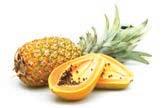
Best for Baby
Expert tips on transitioning your little one to real food.
 BY REBECCA HEATON
BY REBECCA HEATON
a good-quality olive oil to add both flavor and good fat.”
From a food-allergy standpoint, Castle recommends introducing infants to classic food allergens such as peanuts, tree nuts and dairy. “Between 6 to 12 months, we want to expose them to sources of potential allergens to boost their immunity.”
Other good options: swirling a bit of peanut butter in cereal and introducing cooked eggs and poached salmon. “We want babies eating whole foods at the table by age 1,” says Castle.
Store-Bought
If pressed for time, or in need of on-the-go options, what should parents look for in store-bought baby food? “This definitely has a role in feeding young children, and provides an enormous convenience factor,” says Castle. “Baby foods have also significantly improved in quality.”
When your wee one is ready for solid foods, what are the best ones to start him or her on and why? We checked in with Jill Castle, R.D., childhood nutrition expert and author of Fearless Feeding (Jossey-Bass, 2013), for her advice.
Solid Foods
“The general recommendation is to start them on solids around 6 months,” says Castle. “You can feed them with a spoon or take a whole-foods self-feeding approach, where your baby can grasp the food—for example, strips of toast, avocado or cooked sweet potato.”
Castle stresses the importance of nutrient-dense foods. “Iron in particular is critical to a baby’s brain growth in the first few years,” she says, recommending iron-fortified baby cereal reconstituted with breast milk or formula.
Fat is also important in the early stages. “Half of your baby’s calories should be coming from fat,” says Castle. “Avocado is a great source of healthy fat. If you’re preparing your baby food, use healthy oils like
So, should you always buy organic? Castle says that although USDA Organic–labeled products guarantee that parents won’t have to worry about preservatives or ingredients that may improve texture and flavor, many parents don’t have the means to take advantage of organic brands. “I never want to shame parents into buying organic,” she says. “A good practice to get into is to always look at the ingredient list. If the front of the package says ‘5 Veggies Blend,’ but then you read ‘apples’ as the first ingredient, this is misleading. If an ingredient is promoted
USDA Organic pure fruits, veggies and baby cereal in jars and pouches.
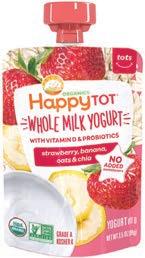


The AcademyAmerican of Pediatrics introducingapproves yogurt at 6 months.
on the front, you should see it as the first ingredient on the back.”
She also notes that, particularly for children younger than 2, you should choose foods without added sugar. “At that age, there isn’t a lot of real estate in the tummy for added sugar. In the baby food category, we’re not seeing a ton of added sugar in newer products these days, and with the updated nutritional labels, it’s easier to see the amount of added sugar.”
DIY
That said, you can’t beat making fresh food for your baby. “You can incorporate spices and herbs. Flavor profiles are so important in the first few years to develop a wide palate,” says Castle. “When we look at other cultures, for example in India with its curries and spices, they’re already doing that for their children. We would do well to adopt some of those practices.
“We want kids eating the family food,” Castle continues. “It’s a great time of life as a parent to step up your own nutrition, thinking about how you’re feeding yourself and how your family meals are nourishing your baby’s body and brain, too.”
Meet Happy Family
Happy Family is a mom-founded and -operated organic food company. When founder and CEO Shazi Visram saw her friend, a new mom, struggle to find healthy food options for her baby, she found her purpose: give babies their healthiest, happiest beginning by offering parents organic, thoughtfully made food. Visram didn’t just envision a business—she saw a social imperative to address the health issues linked to childhood nutrition.
The company is proud to be known as innovators in the organic baby food category since launching in 2006. This year, Happy Family expanded into whole milk yogurt with Happy Baby yogurt cups and Happy Tot yogurt pouches—all USDA-certified organic and non-GMO, with no added sweeteners—continuing the mission to change the trajectory of children’s health through nutrition.


Happy Baby Baby’s First Whole Milk Yogurt

USDA organic and non-GMO. Sweetened with organic fruit and veggie purees.
 ALSO TRY Stonyfield Organic YoBaby Made with pasture-raised, USDA Organic and non-GMO milk. Plain, vanilla and fruit blends.
ALSO TRY Stonyfield Organic YoBaby Made with pasture-raised, USDA Organic and non-GMO milk. Plain, vanilla and fruit blends.
Use Your Plate to Hydrate
Surprise! Eating your water can be even more effective than drinking it.
BY KELLEE KATAGIOne of summer’s (or any season’s) challenges can be drinking enough water to stay hydrated. This season, we suggest a different strategy: Don’t. Instead of reaching for more and more water when the summer heat is on, balance your H2O intake by consuming hydrating foods.
Not only does the water from food “count” every bit as much as water you drink, but research suggests it may work even better to keep you hydrated. For example, a study conducted at the University of Aberdeen Medical School in Scotland found that athletes who ate cucumbers and watermelons after intense exercise rehydrated twice as well as those who only drank water, primarily because of the minerals the fruits contained.
Other nutrients contained in food— including vitamins A and C, folic acid, oleic acid and polyphenols—can also help our cells better retain water, keeping you hydrated longer, asserts dermatologist Howard Murad, author of The Water Secret (Wiley, 2010). And a German study published in the American Journal of Clinical Nutrition reported that children who ate more fruits
HOW MUCH IS ENOUGH?
In general, thirst should be your guide for water consumption, according to the National Academies of Sciences, Engineering and Medicine’s Food and Nutrition Board, which sets the nation’s Dietary Reference Intakes (DRIs). The board doesn’t outline exact requirements for water intake, but they suggest, on average, 91 ounces of water for women daily—from beverages and food—and 125 for men.
and vegetables—which are anywhere from 80 to 98 percent water, in terms of the food’s total weight—stayed significantly more hydrated than those who ate fewer.
Fruits and veggies are the best hydration sources (see “10 Hydration Superstars”), but even most of the meat and some of the grains we eat are more than 50 percent water, in terms of the food’s total weight. For example, cooked chicken and beef are 60 to 65 percent water (the leaner the cut the more water, because protein contains water but fat doesn’t), and seafood ranges from 55 to 86 percent, depending on the
kind and how it’s prepared. Cooked rice is 60 to 68 percent water, depending on the variety and the cooking method. Baked and highly processed foods tend to contain less than 50 percent water, so as a rule, the fresher the better.
10
HYDRATION SUPERSTARS
Go heavy on these hydrating, raw fruits and veggies this summer, which also contain nutrients to help you better retain the water they provide.

96 % CUCUMBERS ICEBERG LETTUCE
94 % TOMATO
95 % ZUCCHINI CELERY RADISHES
93 % GREEN CABBAGE
92 % WATERMELON STRAWBERRIES BELL PEPPERS
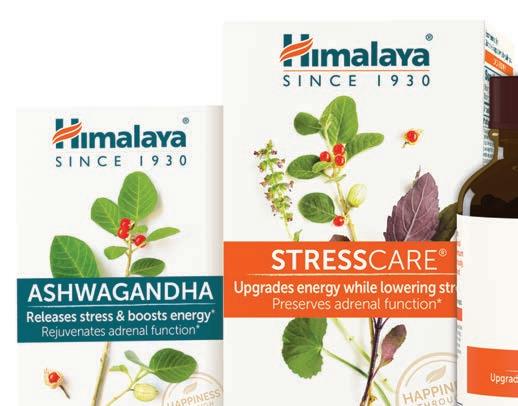











Teff-en Up
Why and how to incorporate this ultra-healthy, gluten-free ancient grain into your diet.
BY KELLEE KATAGIAbout the size of a poppy seed, teff is a tiny but mighty grain. Ethiopians have devoured it for millennia, and even today it accounts for about two-thirds of protein intake and 15 percent of all calories consumed in that country. The success of teff-fueled Ethiopian endurance runners—along with a surging interest in ancient and gluten-free grains—has launched teff onto the radar of many health-conscious Americans.
And for good reason. Teff contains more calcium than any other grain (up to 10 percent of your daily needs in 1 cup of cooked teff, 35 percent in raw). A quarter cup of dry teff serves up 7 grams of protein, about 20 percent of your RDA of iron, hefty doses of other minerals—most notably

manganese and magnesium— and is a good source of thiamin and other B vitamins. Plus, its ample amounts of fiber are a resistant starch, which means they affect blood sugar levels positively.
As with most ancient grains, you’ll want to play with teff in the kitchen to find how you like it best. Whole-grain teff can be cooked and served as a hot porridge (try it with almond slivers and honey), or mixed into soups and stews as a thickener. Teff flour is a bit heavy for use in traditional breads, but it’s tasty in pancakes, waffles, cookies, brownies, muffins and other nonrising baked goods, lending them a rich, nutty flavor that many a first-time teff eater has quickly come to love.
Pick up a bag of Bob’s Red Mill Whole Grain Teff Flour for use in pancakes, muffins, pie crusts and other baked goods. For recipe ideas, visit teffco.com/recipes. Also, while shopping, keep your eye out for wraps, cereals, baking mixes, snack bars and other products that contain teff.
Banana Nut Waffles
MAKES 5 MEDIUM-SIZED WAFFLES
1½ cups almond flour
1 cup teff flour
1½ cups almond milk
2 small bananas (about 1 cup)
2 teaspoons vanilla extract
1⁄3 cup crushed walnuts
DIRECTIONS
1. Place all ingredients except walnuts in a high-speed blender; mix thoroughly.
2. Stir in walnuts.
3. Heat waffle iron; spoon on enough batter to cover three-quarters of the surface.
4. Close lid; bake until waffle is golden-brown and edges are crisp. Waffles will be fragile, so use a fork and spatula to lift them.
TRY TEFF





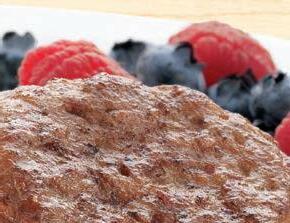




































No More Watched Pot
We’ve all done it: Set a pot to boil on the stove and gone off to do other things, forgetting about it as the water bubbles away. With a BoilingBeeper, those days are over. Just drop the gadget in your pot (it floats), and when the water starts to boil, you’ll hear a loud, repetitive beep. Take it out (it turns off when dry) and add food to cook. $19.95, boilingbeeper.com


Beautiful Bamboo
A Diamond Pan

Swiss Diamond pans live up to their name by featuring a long-lasting, PFOA-free, nonstick coating…with diamond crystals! Did you know that diamonds are an excellent heat conductor? The XD Nonstick Deep Square Grill Pan 11” x 11” is an easy-to-clean option for indoor grilling with a 2.8-inchdeep pan that holds food for up to four. $179.95, swissdiamond.com
Kitchen Gear
Grate, grill, boil, juice and more with these innovative tools and gadgets.
When you’re working hard to cook a delicious meal, beautiful utensils make prepping and serving a bit more pleasant. Bambu’s Organic Essentials Utensil Set is made of USDA Organic bamboo and includes a mixing spoon, slotted spoon, spatula and sauce spoon. Naturally stain-resistant and antimicrobial, each handshaped utensil has a rounded handle for a comfortable grip. $19, bambuhome.com

Juice at Home
What to do with all the lovely, ripe fruits and veggies this summer? Try juicing. If you’ve never juiced before, Omega’s 8006 Nutrition System Juicer is a nice beginner option that is easy to assemble, operate and clean. And it’s not just for juice: This workhorse can turn nuts into nut butter, grind coffee and spices, and even make baby food. $299.99, omegajuicers.com

Grate and Slice
The GraterZoom is a handy gadget that works double-time in your kitchen to grate or slice hard cheeses, garlic, ginger, chocolate and more. Simply press a button and slide off the top, place food in the little chute, click the top back on, and then roll forward on a cutting board to grate, or flip around and roll to slice (just follow the arrows). It’s easy peasy. $14.99, chefn.com
FRESH PICKS
Four delicious cookbooks that deserve a spot on your shelf this summer.
FOR BODY AND MIND
In Ayurveda, India’s ancient healing system, food plays a central role in both physical and mental well-being. In Everyday Ayurveda Cooking for a Calm, Clear Mind (Shambhala, 2018), nationally certified Ayurvedic practitioner Kate O’Donnell shares 100 simple sattvic recipes that blend Indian and Western food traditions. O’Connell writes that “…the sattvic diet is the aspect of Ayurveda that focuses on life-giving, pure foods to promote harmony in the mind.” The book includes an introduction to Ayurveda and the body-mind connection, followed by recipes such as a Sattvic Smoothie, Gingered Sweet Potato Dal, and Toasted Coconut and Cumin Pea Soup.

FARM COOKING
“Let’s face the facts: Fresh food just tastes better,” says Shaye Elliott, star of the Food Network’s Homestead Table. In her latest cookbook, Family Table (Lyons, 2018), Elliott offers more than 80 favorite farm-to-table dishes using ingredients from her family’s five-acre farm, The Elliott Homestead. Recipes run the gamut, from breakfast (Blueberry and Banana Breakfast Bake) and fresh-baked bread (Maple Soda Bread with Raisins) to soups (Creamy Leek and Chickpea Stew), salads (Cucumber Salad with Mint), main dishes (OneSkillet Beef and Potatoes with Goat Cheese), and dessert (Instant Berry Ice Cream).


SWEET AND SAVORY BAKING
A trained pastry chef, Henrietta Inman focuses on using simple, whole foods and fresh ingredients for the 80 recipes in her new book, The Natural Baker (Quarto, 2018). “Natural ingredients, for me, are those simply without additives, preservatives or colourings…such as wholegrain flours, less-refined cane and coconut sugars, other sweeteners such as raw honey and maple syrup, and real fats and oils,” she writes. Recipes include sweet and savory: Rhubarb and Strawberry Galette; Sticky Pear, Ginger and Molasses Cake; Caramelized Red Onion, Parsley and Cheddar Scones; Carrot and Coriander Crackers; and much more.

VEGETARIAN WITH THE SEASONS
Plants are at the heart of Anya Kassoff’s new cookbook, Simply Vibrant (Roost, 2018). The book’s 130 vegetarian and vegan recipes journey through the seasons: “When it comes to seasonal produce, utilizing the most available resources leads to easier, tastier and more affordable meals,” she writes. There’s a Spring Vegetable Chowder; Superfood Summer Porridge with peaches and avocado; fall-style Roasted Root Vegetable Oven Risotto; and a Kitchari Winter Stew, to name a few delicious options. Almost every recipe is accompanied by a beautiful photo, taken by the author’s daughter, Masha Davydova.
VISIT LIVENATURALLYMAGAZINE.COM FOR RECIPES FROM EACH OF THESE BOOKS, INCLUDING A SATTVIC SMOOTHIE, BLUEBERRY AND BANANA BREAKFAST BAKE, CARROT AND CORIANDER CRACKERS, AND SUPERFOOD SUMMER PORRIDGE.



Mmm, Peaches
One of the best-loved fruits, peaches are ripe for the taking.

Peaches (Prunus persica) are a stone fruit, with one large middle seed, along with cherries, apricots, plums and nectarines. They are also surprisingly part of the rose family (Rosaceae), which includes more edible fruits, such as apples, pears, quinces, raspberries and strawberries; almonds; and ornamental trees and shrubs, like roses, meadowsweets and hawthorns. There are two varieties of peaches: clingstone and freestone, distinguished by whether the flesh sticks to the inner seed or easily comes apart.
HISTORY
Peaches originated in China, where they have been grown since 1,000 B.C. Considered the favorite fruit of emperors, peaches were first mentioned in Chinese writings dating back to the 10th century. From China, the “Persian
apple” (the Latin name translation) was introduced to the Romans by the Persians (now Iranians), and later introduced to Europe when Alexander the Great carried peach trees for cultivation via the ancient Persian silk route. Spanish explorers introduced peaches to South America in the mid-1500s, and the French then brought them to the United States.
HEALTH BENEFITS
According to a Texas A&M University study, peaches, plums and nectarines have bioactive compounds that can potentially fight obesity-related diabetes and cardiovascular disease. They may also reduce bad cholesterol (LDL), which is associated with cardiovascular disease. Lab tests at the same university also revealed that peach and plum extracts killed breast cancer cells.
California produces more than 50 percent of the peaches in the United States and grows 175 different varieties. Other topproducing states where peaches are grown include South Carolina, Georgia, New Jersey, Pennsylvania, Colorado and Washington.

570 IU vitamin A (11% DV)
68 calories
2.6 grams protein
WHAT 'S INSIDE?
One large peach (175 grams) contains:
11.6 mg vitamin C (19% DV)
333 mg potassium (10% DV)
Other nutrients: vitamins K and E, niacin, copper, manganese, phosphorus and magnesium
2.6 grams fiber (10% DV)
14.7 grams sugar
Just Peachy
‘Tis the season to enjoy this sweet and juicy fruit in a cornucopia of fun and flavorful recipes.

PEACHSUSHIROLLS
DID YOU KNOW? .
North America’s first peach orchard was established in 1565 in what is now Florida.
HOW TO WASH A PEACH
Brush away any visible dirt or residue.
Fill a bowl (or partially fill the kitchen sink) with cool water. Place peach in water, gently rubbing with your hands or a clean dish rag to avoid bruising. Rinse in cool running water.
Dry gently with a clean kitchen towel or paper towel, or lay on clean towel to air dry.
OK TO EAT THE SKIN?
Absolutely. As long as you wash it thoroughly, peach skin is delicious and healthy to eat. It has a slightly tart flavor and loads of fiber.
GRILLEDPEACHSALAD

TEMPEHRIBSWITHPEACHHABANEROBARBECUESAUCE
DID YOU KNOW?
In ancient China, the peach was a favorite food of emperors and kings. It was thought to increase longevity and ward off evil spirits. It is now associated with wishes for a long, healthy life and friendship.
Southwestern Grilled Peach Salsa
MAKES 3 CUPS
2 peaches
1 avocado
2 cobs of corn, shucked
2 jalapenos, sliced in half long way and seeded
3 tablespoons olive oil, divided
5 tablespoons lime juice, divided ½ yellow onion, diced
1 tablespoon agave
2 garlic cloves, minced
1 tablespoon salt
1 tablespoon cilantro, chopped
DIRECTIONS
1. Preheat grill to medium-high heat.
2. Slice peaches and avocado in half and remove pits.

3. Combine two tablespoons olive oil and two tablespoons lime juice, and brush over peaches, avocado, jalapenos and corn.
4. Once grill is hot, add avocado, peaches and jalapenos cut-side down; cook 4 minutes. Place corn on grill and cook 8 minutes, turning twice. (If you don’t have a grill, set oven to high broil. Place vegetables and fruit on top rack; cook 5 minutes, until browned.)
5. Peel peaches while they are still hot (optional). Remove skin from avocado. Dice peaches, avocado and jalapenos into ¼-inch pieces, and place in a bowl. Slice kernels off of corn cobs, add to bowl.
6. Combine onion with other cut ingredients.
7. To make dressing, in a small bowl combine agave, garlic, salt, cilantro, and remaining olive oil and lime juice. Mix well.
8. Pour dressing over cut ingredients and toss gently.
PER SERVING: 100 CAL; 2G PROTEIN; 7G FAT; 11G CARB (6G SUGARS); 510MG SODIUM; 2G FIBER
Grilled Peach Salad
SERVES 6
4 tablespoons balsamic reduction*
3 peaches, pitted and sliced
¼ cup sunflower seeds
1 tablespoon olive oil, plus extra to oil grill
Pinch of kosher salt
1⁄8 teaspoon ground black pepper
10 cups arugula
½ cup goat cheese
*For balsamic reduction:
¼ cup balsamic vinegar
2 tablespoons honey
DIRECTIONS
1. Preheat oven to 350°; preheat grill to medium-high, and coat with olive oil.
2. To make balsamic reduction: In a small saucepan, bring vinegar to a boil; reduce heat and simmer until reduced to 2 tablespoons. Remove from heat, stir in honey. Cool to room temperature.
3. Grill peach slices on grill, about 30 seconds each side, until grill marks appear but peaches are still firm. Cool.
4. Arrange sunflower seeds on a half sheet pan, toast in oven 5–10 minutes.
5. In a large bowl, whisk oil, salt and pepper. Add arugula, goat cheese and sunflower seeds, and toss gently.
6. Arrange salad mixture on serving tray or transfer to serving bowl. Arrange peach slices on top, and drizzle with balsamic reduction.
PER SERVING: 220 CAL; 8G PROTEIN; 12G FAT; 21G CARB (16G SUGARS); 750MG SODIUM; 4G FIBER
Peach Sushi Rolls
SERVES 8
½ block semi-firm tofu
1 package rice noodles
1 peach, pitted and sliced into 16 thin slices
2 sprigs fresh mint, whole leaves removed from stem
3 strawberries, sliced into 24 thin slices
5 sheets nori
½ cup honey
¾ cup sweet chili sauce, divided
DIRECTIONS
1. Press tofu to remove water; marinate 30 minutes in ½ cup sweet chili sauce. Slice into strips.
2. In a medium saucepan, bring 4 cups water to boil. Add rice noodles and oil; cook until al dente, 3–5 minutes; drain.
3. To prepare nori, soak a dry dish towel in water and wring out until damp. Place one sheet of nori on towel, shiny side down; leave on 1 minute, until nori is pliable.
4. Working one roll at a time, across the center of each sheet, layer 2 peach slices, 3 strawberries slices, a few mint leaves and a handful of rice noodles; drizzle ½ tablespoon of honey and 1 tablespoon of chili sauce on top. Roll tightly from the bottom, and place seam-side down on presentation platter. Repeat with remaining ingredients.
5. Serve with remaining chili sauce as a dip.
PER SERVING:
FAT; 66G CARB (43G SUGARS); 370MG SODIUM; 2G FIBER
Tempeh Ribs with Peach Habanero Barbecue Sauce
SERVES 6
TEMPEH
1½ pounds tempeh
4 cups vegetable stock
¼ cup turbinado sugar
BARBECUE SAUCE
2 tablespoons olive oil
1 medium sweet onion, diced
1 garlic clove, minced
2 habanero peppers, sliced in half lengthwise
1 tablespoon fresh grated ginger paste
1 large peach, pitted and small dice
1 ½ cups tomato sauce
3 tablespoons apple cider vinegar
3 tablespoons agave
2 tablespoons cornstarch
Find online at livenaturallymagazine.com
DIRECTIONS
1. Slice tempeh into half-inch strips. Place in a shallow saucepan and pour vegetable stock over; tempeh should be completely submerged. Bring to a simmer and cook 10 minutes. Remove tempeh from stock and pat dry.
2. Make spice rub by combining sugar, paprika, cayenne pepper, garlic, oregano, salt and black pepper. Toss tempeh with rub.
3. In a medium sauté pan, heat olive oil over medium heat. Place tempeh in pan and flip after approximately 6 minutes; sides should be brown and crispy.
4. To make barbecue sauce: Heat olive oil in a large saucepan. Sauté onions until tender, about 5 minutes.
5. Add garlic, habanero and ginger, cook until fragrant, about 2 minutes.
2 tablespoons smoked paprika
1 teaspoon cayenne pepper
3 garlic cloves, minced
2 teaspoons dried oregano
1 tablespoon sea salt
½ tablespoon black pepper
¼ cup olive oil
6. Add remaining ingredients, bring to a low simmer for 45 minutes. Blend sauce until completely combined. Blend in a Vitamix, or any blender, until smooth.
7. Serve tempeh with sauce.
PER SERVING: 465 CAL; 24G PROTEIN; 32G FAT; 28G CARB (15G SUGARS); 1040MG SODIUM; 2G FIBER
Optimum Wellness is excited to partner with Johnson & Wales University. Alyssa Walters, Jessie Vandygriff, William Brasch, Chef Adam Sacks and Katherine Privitt (left to right) developed these recipes. Known as a recognized leader in culinary education, JWU is changing the way the world eats. For info, visit jwu.edu/denver.

First Cereal to Contain Amazing
Grain Berry Onyx® Sorghum™; an ancient grain that provides more natural plant fiber, more powerful antioxidants to protect your body from harmful free radicals and helps slow sugar absorption into the bloodstream. A healthy cereal that doesn’t sacrifice flavor!










DigiCode™ Data File

ACCOUNT : 89052 SILVER PALATE KITCHENS
ORDERED BY : BRENDA MORGART
P.O. NUMBER : KROGER LIVE NATURALLY MAG
INVOICE NO. : 1575226
( EPS via EMAIL )
NOTICE: This DigiCode™ file is considered original artwork. It must be inspected and approved by the purchaser. Use of this file confirms acceptance. Any modification of this file through scaling or distortion is prohibited. See back of the Symbology invoice for Limitation of Warranty.
NOTICE: This DigiCode™ file is considered original artwork. It must be inspected by the purchaser. Use of this file confirms acceptance. Any modification of this or distortion is prohibited. See back of the Symbology invoice for Limitation of
0086341-000632
Available
MANUFACTURER’S COUPON - EXPIRES 12/31/18

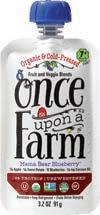

$1.00
CONSUMER: Redeem only by purchasing the brand and size(s) indicated. May not be reproduced. Void if trans-ferred to any person, firm, or group prior to store redemption. Any other use constitutes fraud. Consumer pays sales tax. Discount may not be combined with any other offer. No cashback. LIMIT ONE COUPON PER PURCHASE. RETAILER: Once Upon a Farm will reimburse you the face value of this coupon plus 8 cents handling in accordance with our redemption policy (copy available upon request). Consumer must pay any sales tax. Send all redeemed coupons to Once Upon a Farm, Mandlik & Rhodes, PO Box 490, Dept #1475 , Tecate, CA 91980. Failure to produce invoices on request providing purchase of stock 0852823006-097552 covering coupons may void all coupons submitted. Void if copied, reproduced, altered, transferred, sold or exchanged. Cash value: 1/100¢.
Easy Summer Salads
These fresh and healthy creations are cool dishes for warm days. BY
GENEVIEVE DOLLEXPERIMENT WITH ANY COMBINATION OF SUMMER FRUIT: CHERRIES AND SLICED PLUMS, RASPBERRIES AND APRICOTS, AND SO ON.
Wild Rice and Summer Fruit Salad

Created on 4-13-18 at 13:59:33 by SYMBOLOGY, INC. Maple Grove, Minnesota, 55369 763-315-8080
A pleasing blend of textures and flavors. Soaking rice overnight not only reduces cooking time but also decreases phytic acid content, enabling your body to absorb more nutrients from the rice. SERVES 6

considered original artwork. It must be inspected and approved confirms acceptance. Any modification of this file through scaling the Symbology invoice for Limitation of Warranty.
1 cup wild-rice blend,
soaked overnight
1½ teaspoons salt, divided
½ cup whole pecans
2 tablespoons olive oil
1 tablespoon maple syrup
1½ teaspoons grated
fresh ginger
1 teaspoon cinnamon
1 medium peach, cut into thin wedges
4 ounces blueberries (about ¾ cup)
DIRECTIONS
1. Fill a medium pot halfway with water, and bring to a boil. Drain and rinse rice. Add rice to boiling water with ½ teaspoon salt. Reduce heat to medium, cover, and boil 25–30 minutes, until rice is tender but chewy.
2. Meanwhile, heat a small sauté pan over medium heat. Add pecans, and toast about 4 minutes, stirring frequently until lightly browned and fragrant. Coarsely chop.
3. Add olive oil, maple syrup, ginger, cinnamon and remaining 1 teaspoon salt to a small bowl, and whisk to combine.
4. Drain rice, and briefly rinse with cool water to remove excess starch. Transfer rice to a medium bowl, and gently stir in dressing to coat. Season to taste. Add fruit and pecans, and stir until combined.
PER SERVING: 217 CAL; 16G PROTEIN; 11G FAT; 27G CARB (7G SUGARS); 585MG SODIUM; 4G FIBER

Black Bean, Bell Pepper and Mango Salad with Chipotle-Lime Dressing

This salad is most attractive when served immediately, though leftovers make for an easy on-the-go lunch, and the flavors develop with a longer marinade. Chipotle powder is made from fully ripened jalapenos, which are then dried by smoking. SERVES 4
2 (15-ounce) cans
black beans, drained and rinsed
1 medium green bell pepper, medium dice
1 medium red bell pepper, medium dice
1 large mango, medium dice
3 tablespoons lime juice
2 medium garlic cloves, minced
¾ teaspoon salt
½ teaspoon honey
½ teaspoon chipotle powder
3 tablespoons olive oil
1⁄3 cup pumpkin seeds
Cilantro, for garnish
DIRECTIONS
1. In a large bowl, combine black beans, bell peppers and mango.
2. In a small bowl, whisk together lime juice, garlic, salt, honey and chipotle powder. Slowly drizzle in olive oil, whisking to emulsify. Add dressing to salad, and stir gently. Season to taste.
3. Heat a small saucepan over medium heat. Add pumpkin seeds, and toast about 3 minutes, stirring frequently until lightly browned.
4. Garnish salad with toasted pumpkin seeds and cilantro leaves. PER SERVING: 326 CAL; 15G PROTEIN; 11G FAT; 45G CARB (8G SUGARS); 298MG SODIUM; 14G FIBER
NUTRITIONAL VALUES CALCULATED AT NUTRITIONDATA.SELF.COM


















PLAN AHEAD FOR SUMMER GATHERINGS BY PREPPING INGREDIENTS AHEAD OF TIME. WAIT TO COMBINE UNTIL JUST BEFORE SERVING FOR OPTIMAL TEXTURE.
Mediterranean Spiralized Squash Salad

A spiralizer is an inexpensive kitchen tool that quickly transforms vegetables into an intriguing base for a salad. This salad incorporates Mediterranean flavors, with fresh herbs contributing both earthy brightness and rich antioxidant support. It’s best consumed right away. SERVES 6
2 medium zucchini, about 1 pound
2 medium yellow squash, about 1 pound
2 cups lightly packed fresh herbs (any combination of parsley, mint, basil, oregano)
½ cup kalamata olives; pitted, roughly chopped
½ cup crumbled feta cheese
½ cup sun-dried tomatoes; packed in oil, thinly sliced
2 tablespoons olive oil
1 tablespoon lemon juice
Zest of 1 small lemon
½ teaspoon salt
Freshly ground pepper
DIRECTIONS
1. Using a spiralizer tool, slice squash into “noodles.” Trim with scissors to desired length. Transfer to a large bowl.
2. Pile herbs on a large cutting board, and finely mince. Toss with squash noodles.
3. Add remaining ingredients, and stir to combine.
PER SERVING: 118 CAL; 3G PROTEIN; 10G FAT; 4G CARB (0.5G SUGARS); 522MG SODIUM; 2G FIBER NUTRITIONAL VALUES CALCULATED AT NUTRITIONDATA.SELF.COM
Clean Protein for Every Lifestyle
Raw Organic Protein is ideal for athletes looking to boost protein intake to support athletic activities, build muscle or supplement a low-carbohydrate diet.†

• Provides 22g complete, organic plant protein or 44% of Daily Value

• Now smooth and creamy texture, made with organic peas from the USA
• 4g Branch Chain Amino Acids
• 3g of satisfying fiber and 0g sugar
• Live probiotics and Non-GMO enzymes


• Free of gluten, dairy, whey and soy

Available in four delicious flavors: Chocolate, Unflavored, Vanilla & Vanilla Spiced Chai

Arugula and Roasted Carrots with Creamy Cilantro-Lemon Dressing
Vibrant in color and bold in flavor, this salad is impressive yet simple. Transform into an entrée by topping with grilled chicken or marinated tempeh. Hemp hearts are shelled hemp seeds; they add a mild, nutty flavor and are rich in several essential fatty acids.

SERVES 4
6 medium carrots, ¼-inch slices on the diagonal
2 tablespoons olive oil
½ teaspoon salt
Freshly ground pepper
½ cup sunflower seeds
5 ounces arugula
Hemp hearts, for garnish
DRESSING
½ medium bunch cilantro, with stems
½ cup olive oil
¼ cup plus 1 tablespoon lemon juice
¼ cup hemp hearts
¼ cup water
1 medium clove garlic
1 teaspoon honey
1 teaspoon salt
DOUBLE THE DRESSING, AND ENJOY DRIZZLED OVER FISH TACOS OR YOUR FAVORITE VEGETABLE WRAP.
SHOP RECIPES ON OUR WEBSITE
DIRECTIONS
1. Preheat oven to 425°. Place carrots on a large rimmed baking sheet; toss with olive oil, salt and pepper. Roast 20 minutes, until edges begin to crisp.
2. Add all dressing ingredients to a blender. Blend on high until smooth, creamy and bright green in color. Season to taste.
3. Heat a small saucepan over medium heat. Add sunflower seeds, and toast about 3 minutes, stirring frequently until lightly browned.
4. Serve roasted carrots over a bed of arugula, and drizzle with cilantro dressing. Garnish with sunflower seeds and hemp hearts.
FOR AN ACTIVE LIFESTYLE EPIC DROPS








Back to school. Back to essentials.

Ready, Set, Grill
Red Curry Grilled Trout
Deep-red curry paste and tart lemons add a zesty flavor to mild fish, like trout, catfish and tilapia. SERVES 4
Fish grill pan (optional, but recommended for delicate fish)
Vegetable oil, for grill
1 lemon; quartered (leave peel on), divided 2 tablespoons red curry paste
1⁄3 bunch parsley leaves
2 garlic cloves, peeled ¼ teaspoon salt
¼ teaspoon pepper
4 tablespoons extra-virgin olive oil
4 cleaned, deboned trout (skin on); catfish or tilapia filets will also work
DIRECTIONS
1. Preheat grill to medium-high heat; oil grate or grill pan.
2. Place half of cut lemon (peel on), curry paste, parsley, garlic, salt, pepper and olive oil in a small food processor or blender. Pulse until a paste forms and lemon and garlic are minced into small bits.
3. Set trout skin-side down on grill pan or directly on grill. Cover flesh with curry-lemon paste; be sure to get in all the crevices.
4. Grill 4 minutes; carefully flip over and grill another 2–3 minutes. Catfish may need 3–4 minutes on second side.

5. Serve with remaining lemon slices.
MOVE THE KITCHEN TO THE BACKYARD WITH THESE CREATIVE EATS TO DELIGHT YOUR TASTE BUDS.

Fire-Roasted Fennel, Radishes and Potatoes

Roasting radishes? Absolutely. You may never again think of radishes as just something to toss in salad. Choose large radishes with healthy green tops. SERVES 4
Perforated grill pan or cast-iron skillet
8 baby red or yellow potatoes; scrubbed, dried, cut in half
1 bunch large radishes; cut in half, save the tops
1 fennel bulb; cut off end and top, slice in ½-inch slices, save the fronds
1 medium onion, cut in half and then eighths
Extra-virgin olive oil
Salt and pepper
3 sprigs fresh rosemary or fresh thyme
Balsamic vinegar
DIRECTIONS
1. Heat grill to high heat (400°).
2. Place potatoes and radishes in separate bowls. Place fennel and onion in a bowl. Sprinkle each bowl with a generous splash of olive oil; season with salt and pepper.
3. Place potatoes in grill pan. Cook for 15 minutes; toss frequently to grill evenly.
4. Lower heat to 375°. Add onions, fennel and herb sprigs. Cook 20 minutes; give vegetables a good stir every few minutes.
5. Add radishes; grill 10 minutes.
6. Wash radish tops (they are notoriously dirty), and dry well. Chop into a rough salad. Add fennel fronds, if available. Set aside.
7. Place vegetables on a platter. Top with radish-fennel greens. Sprinkle with olive oil and balsamic vinegar, and season with salt and pepper. PER SERVING: 363 CAL; 9G PROTEIN; 4G FAT; 76G CARB (6G SUGARS); 641MG SODIUM; 10G FIBER
NUTRITIONAL VALUES CALCULATED AT NUTRITIONDATA.SELF.COM
CHERIBOMB
1-2 oz. vodka
4 oz. Cheribundi Tart
Cherry Juice
1 lime
Sparkling water (optional)
Lime slice & rosemary for garnish
Radish Tops for Reducing Inflammation
Did you know that radishes and their leafy tops contain one of the primary compounds for reducing inflammation? The entire radish plant, but particularly the leaves, is a good source of quercetin, a bioactive flavanol that reduces inflammation.
Source: Chowfit.com





RASPBERRY LEMONADE COCKTAIL
Santa Cruz Organic ®
Lemonade Lemon
Flavored Beverage
1-2 oz. Malibu Rum
Lemon slice & raspberry for garnish
Greek Chicken Meatballs with Eggplant and Zucchini in Pita
Tired of burgers and hot dogs? Grilled Mediterranean meatballs (called keftethes in Greece and keftas in Morocco) with a cooling tzatziki sauce are perfect for the steamy dog days of summer. SERVES 4–6

1 zucchini, sliced lengthwise into 4 long slices
½ small eggplant, cut lengthwise and then in ¼-inch slices
1 pound ground chicken or turkey
½ cup finely chopped onion
1 cup soft breadcrumbs
1 egg
1 teaspoon salt
¼ teaspoon pepper, plus more to taste
2 tablespoons parsley, chopped
1 tablespoon fresh mint, chopped
Extra-virgin olive oil
Dried oregano
2–4 whole-grain pita bread rounds, cut in half
Shredded lettuce
1–2 tomatoes, diced
½ cup feta cheese
Tzatziki sauce (storebought or recipe below)
TZATZIKI SAUCE
1⁄3 English cucumber, peeled and diced
1 cup Greek yogurt
2 cloves garlic, minced
2 tablespoons fresh dill
1 tablespoon freshsqueezed lemon juice
¼ teaspoon salt
Hefty pinch of pepper
To make sauce, place diced cucumber in a colander; press out excess water with paper towel. Place cucumbers in a bowl, add all ingredients, and stir well.
DIRECTIONS
1. Salt zucchini and eggplant; let sit 30 minutes on a rack with paper towels underneath.
2. Meanwhile, place ground chicken or turkey in a medium-sized bowl. Add onions, breadcrumbs, egg, salt, pepper, parsley and mint, and knead with your hands, until well-combined. Chill 30 minutes.
3. Pat excess water from eggplant and zucchini with a dry paper towel. Brush both sides generously with olive oil; sprinkle with dried oregano and pepper. Set on a platter.
4. Shape meat mixture into 4–6 long, flat meatballs. Set on a platter.
5. Heat grill to medium heat; oil well.
SHOP RECIPES ON OUR WEBSITE
6. Place meatballs on grill; cook 8–10 minutes, turning once.
7. When meatballs are half done, place eggplant and zucchini on grill. Cook 2–3 minutes on each side.
8. Place meat and vegetables on a platter with pita bread, lettuce, tomatoes, cheese and a bowl of tzatziki. Let guests make their own sandwiches.
PER SERVING: 367 CAL; 24G PROTEIN; 7G FAT; 13G CARB (7G SUGARS); 1,220MG SODIUM; 4G FIBER NUTRITIONAL VALUES CALCULATED AT NUTRITIONDATA.SELF.COM
ROASTED STRAWBERRY SPARKLER
Sparkling water
1-2 roasted strawberries
Fresh mint for garnish Add Prosecco for an adult version.
Grilled Strawberries and Rhubarb Compote
Don’t forget dessert when grilling. This treat comes together quickly and cooks on its own while you eat dinner. Add a summer beverage of sparkling water garnished with roasted strawberries as an after-dinner refresher. SERVES 4

1 foil 8x8 pan plus aluminum foil to cover 2 wooden skewers, soaked in water
2 pounds strawberries; trimmed, washed and dried, divided 4 stalks rhubarb, cut down the center and diced
2⁄3 cup sugar
¼ teaspoon salt
½ teaspoon vanilla
8 basil leaves, stacked and cut into fine ribbons
Fresh mint
Berry-flavored sparkling water
Vanilla ice cream or 4 ounces strawberry-rhubarb yogurt (try Noosa)
8 thin almond Belgian cookies, broken into pieces (try Private Selection Belgian Almond Thins)
DIRECTIONS
1. Preheat grill to mediumhigh heat.
2. Set aside 8 strawberries for drinks. Halve remaining strawberries, and place in a bowl with rhubarb, sugar, salt, vanilla and basil. Toss well.
3. Place fruit mixture in foil pan; cover with foil. Place on center of grill for 30 minutes.
4. Just as fruit finishes cooking, place 4 of the set-aside strawberries on 2 parallel wooden sticks; repeat (this makes them easier to turn). Grill 3 minutes on each side.
5. Fill each glass with ice. Place 2 roasted berries in each glass, add a few mint leaves, and fill with sparkling water.
6. Divide hot berry-rhubarb compote into 4 bowls; top with ice cream or a dollop of yogurt. Sprinkle with broken cookies. PER SERVING: 267 CAL; 3G PROTEIN; 4G FAT; 56G CARB (42G SUGARS); 205MG SODIUM; 4G FIBER
NUTRITIONAL VALUES CALCULATED AT NUTRITIONDATA.SELF.COM
Place halved stone fruits like peaches, plums and nectarines directly on the grill grate. Drizzle fruits with honey, and top with slivered almonds. For bananas: Leave them in their skins, and cut them down the middle, fill with chocolate chips, and wrap in heavy-duty foil; grill for 10–15 minutes.
A Melting Pot
BY REBECCA TREONOf all the regional cookery across the United States, Louisiana’s Creole and Cajun cuisines are perhaps the most interesting. From the late 17th century onward, the port city of New Orleans was a crossroads of trade and culture. The term “Creole” was a way to define a person born in Louisiana, but whose parents had a different heritage—Spanish, French, African, Amerindian or Caribbean. Cajun cuisine, by contrast, is the rustic, country-style cookery of the French-speaking Acadians deported by the British from Canada in the 18th century. Creole and Cajun can be used to describe people and cooking—one of the notable things the area is known for.
The cooking is a blend of elements brought from all the cultures that call New Orleans and southern Louisiana home.

Gumbo, a classic soup, acts as a metaphor— literally a melting pot of cultures: The roux is French, the okra is African, the peppers Spanish, and the filé (dried and ground sassafras) is native
Choctaw. Among the other nationalities lending their influence to the region’s food are Italian, German, Irish and English—some 36 different nationalities have put down roots in New Orleans.

Chef Kevin Belton, a self-taught Creole chef and author of the new cookbook Kevin Belton’s New Orleans Kitchen (Gibbs Smith, 2018), credits the diversity of Louisiana cooking to the vast variety of readily available ingredients. “Where so many areas are starting to adopt this idea of farmto-table and using local ingredients, we’ve had it all along,” he says. “We have a wealth of fresh ingredients, and we have delicious, fresh seafood.”

Louisiana’s Cajun and Creole cuisine draws from a patchwork of influences.
Starting in the colonial days, people combined ingredients that were easily available with cooking techniques of the Old World. The area is home to both freshwater and saltwater bodies, supplying indispensable components like oysters, crabs, shrimp, crawfish, and fish such as snapper, flounder and trout. New Orleans’ subtropical climate is a ripe breeding ground for tomatoes, garlic, red beans, peppers, rice, sugarcane, chayote (a pear-shaped fruit with a cucumber flavor), and various herbs and spices that are all characteristic elements of Creole and Cajun cooking. Chef Paul Prudhomme is famous for creating his own version of Cajun cooking, which he dubbed “Louisiana cooking.” The main distinction between Creole and Cajun food is that Creole is “city food” and Cajun is “country food.”
Though some differences will always remain (and may be decipherable only by locals), the two styles of cooking share similar classic dishes, including jambalaya, étouffée, boudin (various kinds of sausage), andouille sausage and the ubiquitous crawfish boil.

“It’s not so much what’s on the table, but who’s at the table,” says Belton. “In New Orleans, we still sit and spend time together around that kitchen table. We share our values, history and family time over food.” Among Belton’s go-to suggestions for New Orleans restaurants are Antoine’s, a 175-year-old restaurant that’s credited with inventing oysters Rockefeller; Dooky Chase’s Restaurant, run by the indomitable 95-year-old queen of Creole cuisine, Leah Chase; and Brigtsen’s, where chef Frank Brigtsen (who cooked with Prudhomme for years) offers modern takes on Creole and Acadian cuisine. If a travel south isn’t in the cards, though, the recipes in Belton’s book will be a great substitute.
Red Bean Chili with Jalapeño-Cheddar Waffle Bowls
A red bean chili is simply a classic hearty dish. I wanted to revisit this classic and use the red beans we are known for here in New Orleans. Making the waffle bowls means that you can eat everything on the plate! SERVES 6 TO 8

RED BEAN CHILI
2 tablespoons olive oil
1 pound ground bison or beef
1½ cups chopped onions
2 tablespoons Creole

seasoning
1 tablespoon minced garlic
1 cup beef stock
2 cups diced tomatoes
1 cup strong coffee
1 tablespoon tomato paste
¼ cup brown sugar
1 tablespoon chili powder
1 tablespoon cocoa powder
1 jalapeño, seeded and diced
1½ tablespoons ground cumin
DIRECTIONS
1 teaspoon coriander
2 (15-ounce) cans kidney beans, rinsed and drained
WAFFLE BOWLS
1½ cups all-purpose flour
2 teaspoons vegetable oil
1 cup cornmeal
1 cup finely grated cheddar cheese
2 teaspoons baking powder
1 tablespoon salt
1 teaspoon pepper
2 eggs, beaten
2 cups whole milk
2 jalapeños, seeded and diced
1. In a Dutch oven or large pot on medium heat, add oil. When hot, add meat and sauté, breaking up into crumbles until browned; remove to a bowl and set aside.
2. Add onions and Creole seasoning, and sauté for 1 minute. Add garlic, stock, tomatoes, coffee and tomato paste; stir well. Add brown sugar, chili powder, cocoa powder, jalapeño, cumin, coriander and beans. Stir well and return meat to the pot. Reduce heat to low and simmer, partly covered, for 1 hour. Taste and adjust seasoning. Continue to simmer on low, stirring often. The longer the chili cooks, the richer and more flavorful it will become.
3. Heat waffle iron according to manufacturer’s directions. Combine flour, oil, cornmeal, cheese, baking powder, salt and pepper in a mixing bowl. Stir until well-combined. Add eggs, milk and jalapeños; thoroughly combine. Scoop batter into waffle iron and cook according to manufacturer’s directions. Remove waffle while warm, and place in a soup bowl to cool and form. When cool, fill with chili.
FOR CHEF KEVIN BELTON’S FAMOUS FRIED EGGPLANT FINGERS WITH RED GRAVY, GO TO OPTIMUMWELLNESSMAGAZINE.COM
HEALTHY AGING
Many a product claims it can keep you from looking older. But at the end of the day, very basic lifestyle choices could prove to be your fountain of youth.
 BY NANCY COULTER-PARKER
BY NANCY COULTER-PARKER
When we talk about getting older, our minds usually go to one of two places: finances (retirement savings, anyone?) or our outward appearance (was that gray hair there yesterday?). Most of us don’t realize until much later in life that there’s a lot more to think about than money and wrinkles. As physician and author Dr. Tieraona Low Dog notes, “An important message to give anyone is: If you are putting money in the bank at 40 so you have it for retirement, you should be thinking just as much about being mobile, active, healthy and pain-free. You want to invest in health habits, too, that meet the needs to live a long life.”
WHY DO WE AGE?
Although the million-dollar questions of why we age and if we can reverse the aging process remain, Tom LaRocca, Ph.D.—instructor and research associate of integrative physiology at the University of Colorado, Boulder, who has been studying healthy aging since 2006—says what scientists do know is that aging starts much earlier than most of us think. “Wrinkles are the least of our concern,” he says. “Most physiological functions, such as lung capacity and muscle strength, start to decline at about age 30. It’s not obvious at first, but eventually this decline reduces quality of life.”
Two primary things happen at a cellular level to cause aging, explains LaRocca. The first is oxidative stress, which is what occurs when free radicals are left unchecked. We need free radicals for certain functions, such as detoxifying the body, but when the body’s antioxidants and free radicals get out of sync, free radicals can wreak havoc. Left to their own devices, they can damage cells, proteins, DNA and cell membranes. This streak of damage can also create a pathway to chronic disease and inflammation, and even accelerate aging.
“Most people are familiar with free radicals. They are normal. But as we age, there is an overproduction of free radicals, and we don’t clear them out as well as we used to,” says LaRocca.
The other process at work in aging is inflammation. Most people are familiar with inflammation in the context of injury. Yet, LaRocca explains, with aging, there is typically a much lower-grade inflammation than with an injury. “The same genes in some cases get turned on during aging that would get turned on with an injury, yet with aging this causes chronic, low-grade inflammation.”
THE GOOD NEWS
Aging is a mix of genetics and lifestyle. In other words, there are things you can control. “If you smoke cigarettes, become obese, eat improperly and never exercise, you can be old at age 30. If you don’t do those things, you can be young and vibrant at 70 or 80. A lot is within your control,” says Dr. Stuart Jay Olshansky, professor in the School of Public Health at the University of Illinois in Chicago. “If you put junk in, you should not be surprised to get junk out. Exercise is about as magical as it gets, the elixir, the only equivalent of a fountain of youth that exists today.”
GET MOVING
It’s true. Studies point to exercise being a fountain of youth of sorts at the cellular level. “We know that exercise is anti-inflammatory and reduces oxidative stress,” says LaRocca.

This doesn’t mean you have to run a marathon—it’s more about just moving your body. “We know through science that there are few worse things for your health than not moving, and it is clear that even a little bit can do a whole lot of good,” says Lisa Cohen, certified nutritionist, fitness expert and owner of lisacohenfitness.com. “Sitting is the new smoking.”
There is no one-size-fits-all for exercise, but the most transformative effect, Cohen says, comes with people who are sedentary and simply start moving. If you are already a fit person, high-intensity interval
training is the best for turning back the clock, suggests a new study published in Cell Metabolism. “In this study, the group that showed the fastest cellular regeneration and improved age-related decline in muscle were the people who did the high-intensity interval training,” says Cohen.
Although the study was done using bikes, Cohen says, “If you are walking your dog, go a little harder for 10 seconds, pushing until you are a little uncomfortable and then slow the pace and recover. Do that on and off. The more fit you are, the harder you are able to go. But absolutely, do it at your fitness level.”
Exercise also helps us to maintain a healthy weight as we age. “After age 40, it is pretty much part of the natural degenerative process that you would lose muscle mass yearly. The more muscle mass you have, the higher your metabolism is. Through the natural degenerative process, we lose that muscle mass, so our metabolism is subsequently going down each year. Thus, we have to eat less to maintain our weight,” Cohen explains. “With exercise, we not only regenerate cells; we improve muscle mass and boost metabolism.”

DON’T FORGET YOUR DIET
Not surprisingly, like exercise, a healthy diet and lower calorie intake also reduce inflammation and oxidative stress, says LaRocca. In fact, studies indicate that eating approximately 10 percent fewer calories can delay disease, says Low Dog. The goal should be to stay within your normal weight range or on the leaner end of normal weight, she says. “Some studies have shown that small reductions in calories over time can decrease the risk of diabetes and improve cholesterol. The key is to choose to eat calories that are as nutritious as possible,” she explains.
Your first nutrition step should be to cut out the bad stuff. “The foods that we know will age you are sugar and processed foods. Reduce or eliminate those,” Cohen says. With her clients, Cohen focuses primarily on a plantbased diet, with small amounts of fish and animal protein, whole grains and healthy fats, which is similar to the Mediterranean diet. Although there is no evidence that the Mediterranean diet will specifically make you live longer, LaRocca notes that people who consume this diet have been shown to have lower levels of oxidative stress, have a lower risk for heart attacks and strokes, and are less likely to develop Alzheimer’s disease. Studies also show that antioxidants can combat oxidative stress. The key here, says LaRocca, is to get them through your diet, not as a supplement. This is in part why Cohen suggests to her clients that they get six servings of fruits and vegetables a day. “Ideally it’s one to two servings of fruit, and then four or more servings of

vegetables,” she says. Antioxidant-rich fruits and veggies include blueberries, blackberries, plums, oranges, kale, spinach and brussels sprouts, to name just a few.
If you focus on diet and exercise, you’re on the right path, Olshansky says. “You make a decision every day when you wake up: ‘What will I eat? Am I going to exercise? Am I going to take care of my body?’ If you have a lifetime of making the right choices, you tend to make out better than if you make bad choices. Don’t overthink it.”
VANITY FAIR
As for the wrinkles? Vanity is not such a bad thing, says Low Dog. “It’s OK to want to feel and look your best. There is something useful about taking pride in one’s appearance. Where it’s a problem is when we do it because we feel shame for aging.” Instead of feeling shame, make it about embracing change, Olshansky suggests. “Things will change with the passage of time—you can let them affect you or adapt to them. I was a runner for about 40 years. I had to stop, but I replaced it with the elliptical and walking. It’s all about adaptation and what you can do to replace the things you can’t do anymore. Instead of fretting about what you have lost, focus on what is new that you can do.”
HEALTHY AGING TIPS

BALANCE
Every time you brush your teeth, do it on one foot, says Dr. Olshansky, who says he picked up this tip from a lecture put on by the International Longevity Centre. “Balance yourself on one foot for one to two minutes while you brush your teeth every day. Balance on one foot when you brush your teeth in the morning and on the other when you brush your teeth at night. It’s a simple exercise or procedure that can help you dramatically improve your balance.”
VITAMINS
✦ Vitamin B12
In addition to taking a good multivitamin that has vitamin K to aid calcium absorption, Low Dog recommends taking the following nutrients as you age. She also suggests getting tested if you think you are deficient in any nutrients.
Roughly 15 percent over age 70 are vitamin B12 deficient, and estimates vary for people ages 50 to 70. There are even some estimates that as many as 20 percent of us are deficient. The problem with B12 deficiency is that the symptoms can easily be misinterpreted as signs of aging, says Dr. Low Dog. “Joint pain, depression, memory loss, loss of taste and smell— people just think ‘I am getting old,’ not realizing that they are deficient.” The Health and Medicine Division of the National Academies of Sciences, Engineering and Medicine recommends that adults over age 50 get B12 from fortified foods or dietary supplements.
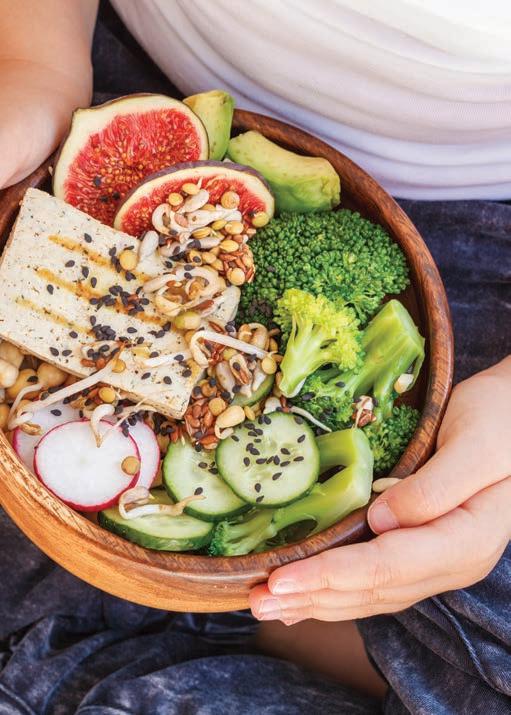
✦ Vitamin D
As we age, our ability to make vitamin D in our skin decreases, even with sun exposure. “The kidneys are where we make the active form of vitamin D, yet kidney function decreases with age, which then impairs your ability to absorb calcium. You need vitamin D to absorb calcium,” Low Dog says.
✦ Magnesium
Low levels of this often-overlooked mineral are associated with type 2 diabetes, high blood pressure, osteoporosis, colon cancer, cardiovascular disease and poor metabolic health. It helps regulate blood sugar and maintain insulin sensitivity, among other things, Low Dog says.
They don’t call it beauty sleep for nothing. Sleep can reduce levels of cortisol, which is released in response to stress, and balance hormones. “Sleep cures just about everything,” says Dr. Olshansky. “Sleep deprivation leads to all kinds of health problems, especially among older individuals. When you sleep, you are physically cleaning out substances in the brain that create problems, and your body repairs itself at night. Sleep is a big deal.” The National Institutes of Health recommends that adults older than 18 get seven to eight hours of sleep each night.









BOOST
Spearmint
Breath-freshening is just the start of this herb’s superpowers. BY
KELLEE KATAGIWHAT IS IT?.
A popular and tasty herb—native to Europe and Asia but naturalized throughout most of the world—that’s stocked with antioxidants and antifungal components.
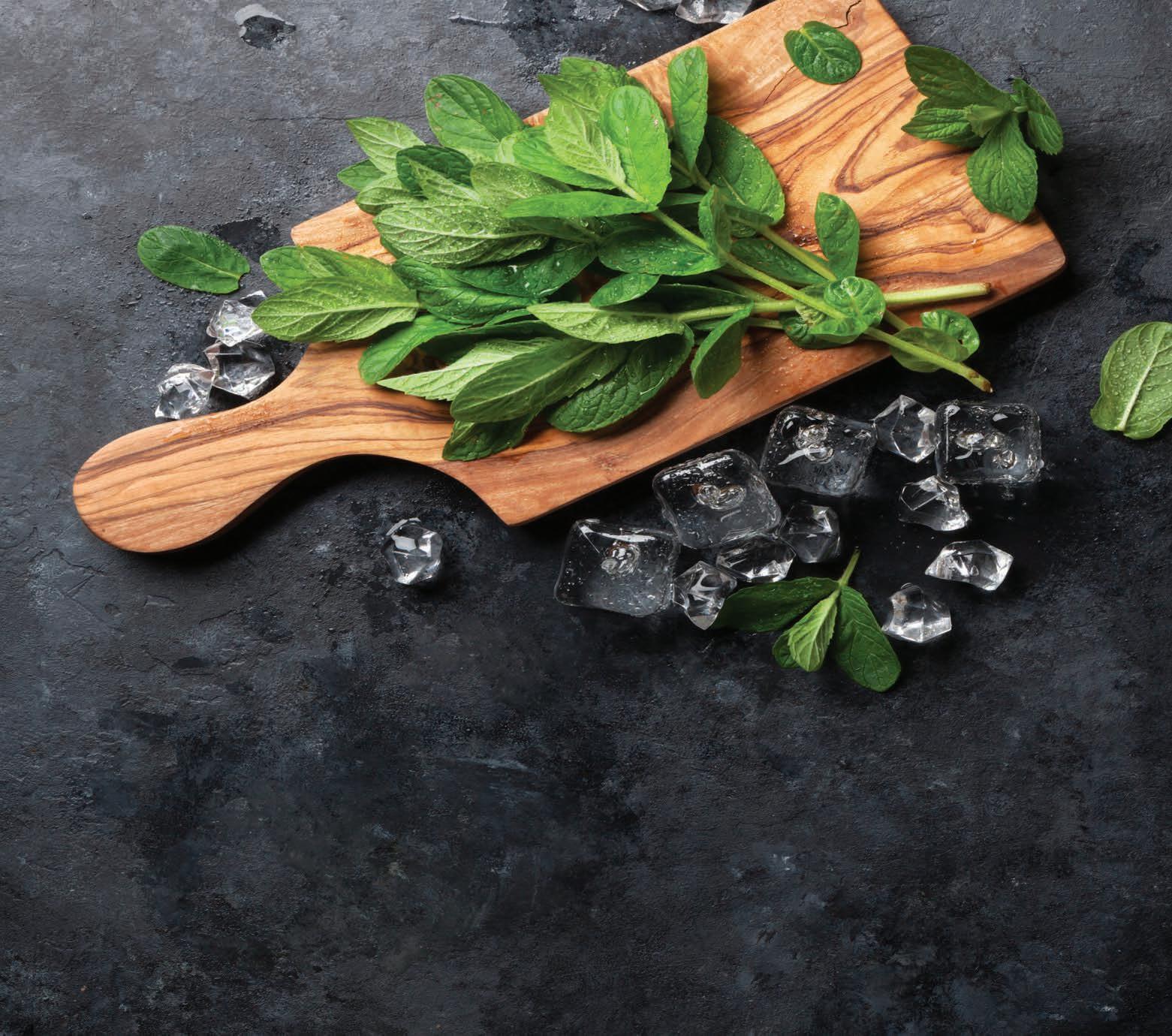
USE IT FOR.
Fighting nausea and other digestive issues, reducing excessive hair growth, improving memory and sleep

HOW TO TAKE IT.
Spearmint is available in capsules, as an extract or essential oil, and in the form of tea.
DID YOU KNOW? .
The word “Spear”-mint derives from the plant’s pointy leaves.
SPEARMINT VS. PEPPERMINT.
THE PEPPERMINT PLANT IS A HYBRID OF SPEARMINT AND THE LESSER-KNOWN WATER MINT. PEPPERMINT HAS MORE MENTHOL, WHICH MAKES IT A STRONGER ANTIINFLAMMATORY BUT ALSO IRRITATING TO SOME.
THE SCIENCE.
Spearmint extract (900 mg per day) might boost short-term memory and the ability to fall asleep, suggest a few studies, including a recent one with older adults published in The Journal of Alternative and Complementary Medicine. A few preliminary studies hint that drinking two cups of spearmint tea a day could reduce hormones that lead to excessive male-pattern hair growth in women. Various research also indicates that mint can relax stomach muscles, relieve nausea and possibly provide other digestive benefits.



Forever Young
Four natural supplements to support healthy aging.
 BY KAREN MORSE, M.P.H.
BY KAREN MORSE, M.P.H.
Getting older is a fact of life. And while genetics affects how you age, there’s a lot you can do to stay looking and feeling your best. A wholesome lifestyle and proper nutrition are essential, but supplements that promote healthy aging could give you an extra edge.

According to the latest anti-aging research, these four supplements are worth considering.
COLLAGEN
The most abundant protein in the body, collagen is a critical component of our bones, joints, hair, skin and nails. As we age, collagen production slows down, with up to a 25 percent reduction by the age of 40, leading to symptoms such as sagging skin, wrinkles, aching joints and bone-density loss.
Research has shown that supplementing with collagen can protect bones and joints, as well as combat the signs of aging skin. Though more than 20 types of collagen have been identified, three of them (types I, II and III) account for about 90 percent of the body’s collagen supply.
Supplements containing types I and III collagens are used to improve skin elasticity, minimize fine lines, strengthen nails and support bone health, while a type II collagen supplement supports cartilage and healthy joints.
A study published in Clinical Interventions in Aging found that subjects who took a supplement containing 50 milliliters of hydrolyzed type I collagen daily for 60 days had a noticeable reduction in skin dryness and wrinkles. After 12 weeks,
the subjects were noted to have significantly greater collagen density and firmer skin.
A 2016 study investigating type II collagen found that subjects with osteoarthritis knee pain who took a daily type II collagen supplement of 40 milligrams for 180 days had less pain and stiffness than subjects who were randomized to the placebo group.
There’s no recommended daily dose for collagen supplements. For the best results, take as directed on the product packaging.
OMEGA-3 FATTY ACIDS
Omega-3 fatty acids are necessary for our bodies to function properly. In addition to supporting a healthy heart, they protect joints and muscles, are important for cognition and eye health, and promote normal cell and organ function.
The three main omega-3s are alpha-linolenic acid (ALA), eicosapentaenoic acid (EPA) and docosahexaenoic acid (DHA). ALA is primarily found in plants, such as flaxseed and soybeans, while EPA and DHA are found primarily in seafood (and sea plants). Our bodies don’t make enough of
these fatty acids on their own, so we must get them from our diets.
The American Heart Association recommends eating at least two servings of fatty fish per week or taking an omega-3 supplement when that isn’t possible.
To maintain good health and avoid a fatty-acid deficiency, experts recommend a dose between 500–1,000 milligrams of EPA plus DHA daily.
CURCUMIN
Used in Ayurvedic medicine and Traditional Chinese Medicine to treat conditions such as pain, inflammation and skin wounds, turmeric (the source of curcumin) has been known for its medicinal properties for thousands of years.

Results from 2012 research at The Ohio State University, published in Nutrition Journal, found that healthy middle-aged people who supplemented with a low dose of curcumin could experience health-boosting benefits, including lower plasma triglyceride levels (a high level has been linked to cardiovascular-disease risk).
A study of patients with rheumatoid arthritis, published in Phytotherapy Research, found that subjects who were randomized to a curcumin group and took 500 milligrams twice a day reported less swelling and pain than subjects who took a prescription drug to treat their condition.
There is currently no recommended daily dose of curcumin, but the U. S. Food and Drug Administration has classified it “generally recognized as safe.” Talk to your doctor about a dose that’s right for you, and don’t exceed the amount recommended on the product label.
MAGNESIUM
Our bodies need the essential mineral magnesium for more than 300 biochemical reactions. According to experts, the majority of Americans
MegaRed
Advanced 4 in 1 (supports heart, joints, brain and eyes) contains 900 milligrams of fish oil and krill oil, giving you two times more omega-3 fatty acids than fish oil alone.
Nature’s Way
Curica Turmeric Drops are formulated with Theracurmin, a more bioavailable form of curcumin for enhanced absorption.
NeoCell Super Collagen Powder with types I and III collagen promotes healthy skin.
suffer from magnesium deficiency, which can lead to stress, anxiety and sleeplessness, to name a few symptoms.
Stress takes a huge toll on the body and is thought to accelerate aging. One study investigating work-related exhaustion, an indicator of chronic stress, found that prolonged stress shortened telomere length, a sign of accelerated cellular aging.
Magnesium, known as the “anti-stress” mineral, has been found to reduce stress and anxiety, as well as to promote relaxation and restful sleep. You can find magnesium in pill and powder form, so buy what you think you’ll be most likely to continue using.
The National Institutes of Health recommends 320 milligrams per day for women and 420 milligrams daily for men.
Solgar No. 7 with type II collagen, vitamin C, a boswellia extract and spices— including turmeric root, ginger root, white willow bark and a blend of peppers— targets joint structure and function.
Natural Vitality
Natural Calm magnesiumsupplement powder restores healthy magnesium levels with daily use.


Mushrooms as Meat
Made with beans and mushrooms, these meat-free burgers are hearty enough for carnivores.
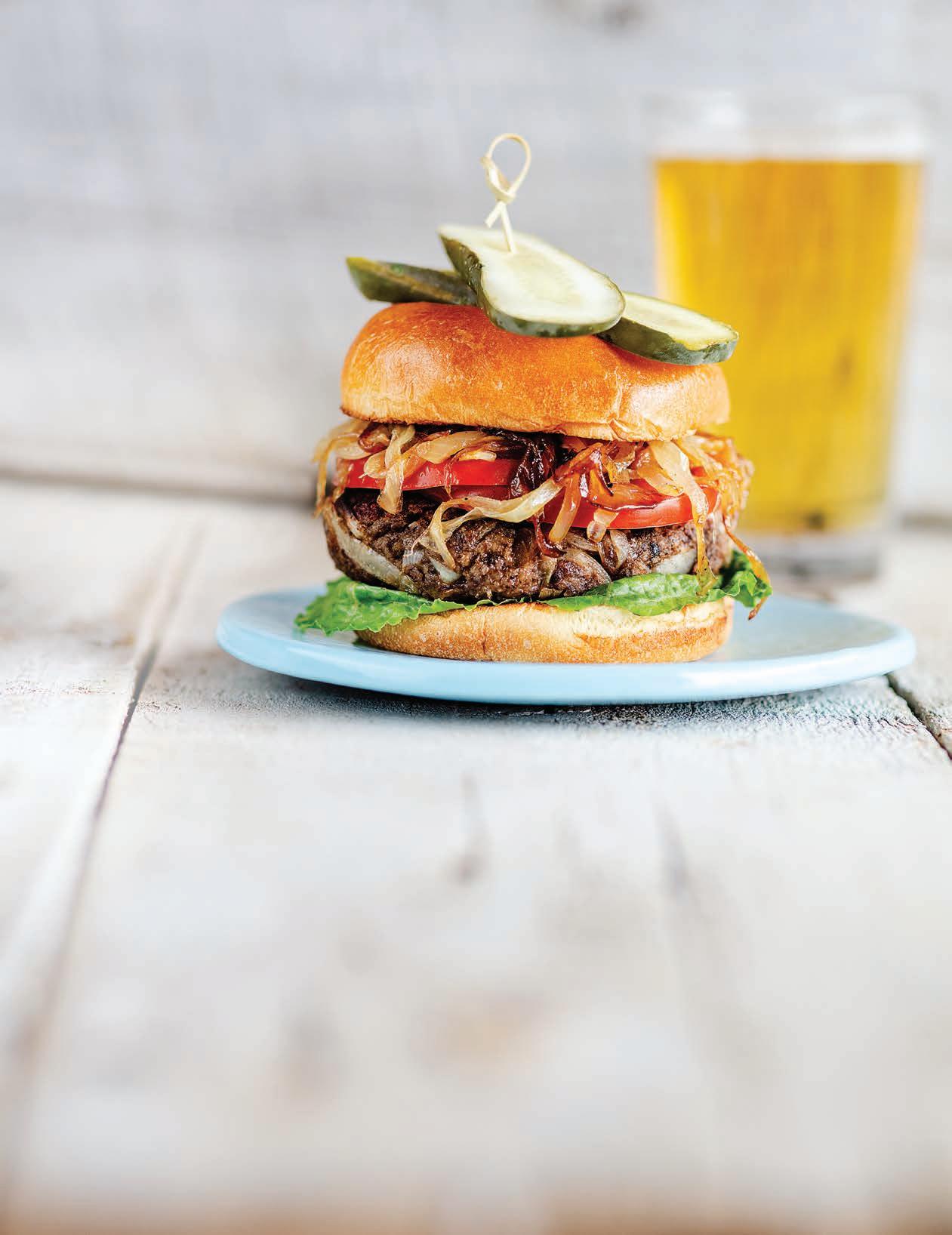 BY DINA DELEASA-GONSAR
BY DINA DELEASA-GONSAR
Blending mushrooms with meat or using them as a substitute is not only healthier for you but for the planet as well. These patties are made up of black beans and hearty portobello mushrooms; caramelized onions elevate the flavor. Everyone in my family was surprised by how much they loved them. Serve on a pretzel or brioche bun with avocado, thinly sliced radish, arugula and a slice of heirloom tomato, plus your favorite condiments.
Caramelized Onion and Portobello Mushroom Burgers
MAKES 6 PATTIES
1 (15-ounce) can black beans, drained and rinsed
2 cups portobello mushrooms; gills and stem removed, roughly chopped
2 tablespoons garlic, minced
2 tablespoons
Worcestershire sauce
DIRECTIONS
2 tablespoons water
½ lemon, juiced
1 tablespoon chia seeds
1 teaspoon onion powder
½ teaspoon black pepper
½ teaspoon kosher salt
1 teaspoon harissa
1. In a food processor, add black beans, mushrooms, garlic, Worcestershire sauce, water, lemon juice, chia seeds, onion powder, black pepper, salt and harissa. Pulse until mixture is a thick paste; chunks are OK.
2. In a large bowl, beat eggs; add mushroom and bean mixture. Then add breadcrumbs, cheese and caramelized onions. Mix well.
3. In a large frying pan, heat olive oil over medium heat. Once oil starts to simmer, 1–2 minutes, use dampened hands (the mixture will stick to you if you don’t) and scoop a ½ cup of the mixture into the palm of your hand. Gently shape into a burger,
2 eggs
1 cup panko breadcrumbs
¾ cup Parmesan cheese, grated
½ cup caramelized onions (see box below)
1 tablespoon olive oil
all the while pressing together. The mixture should hold a burger shape. If it doesn’t, add a tablespoon more of breadcrumbs.
4. Place in frying pan, and cook 3–5 minutes per side, or until they’re golden brown and a crust has formed on each side.
PER BAR: 267 CAL; 16G PROTEIN; 12G FAT; 25G CARB (3G SUGARS); 471MG SODIUM; 8G FIBER NUTRITIONAL VALUES CALCULATED AT NUTRITIONDATA.SELF.COM
Dina Deleasa-Gonsar loves to create recipes and, in particular, experiment with ingredients. See more of her creations at dishitgirl.com.
PORTOBELLOS ARE A GOOD SOURCE OF PROTEIN, THIAMIN, VITAMIN B6, MAGNESIUM, ZINC AND MANGANESE.
HOW TO CARAMELIZE ONIONS
Thin-slice 1–2 onions. Coat the bottom of a frying pan with 2 tablespoons butter, or a mixture of olive oil and butter (about 1 teaspoon per onion). Heat pan on medium-high heat, until butter is melted. Add onions, and stir to coat with the butter. Spread onions evenly over the pan, and let cook, stirring occasionally. After about 10 minutes, sprinkle onions with about ½ teaspoon sugar and a bit of salt. This process could take 30–45 minutes—low and slow is the key.



PROVEN BY SCIENCE, LOVED BY TASTE BUDS.

1.4x HIGHER IN ANTIOXIDANTS THAN ANY FRUIT JUICE








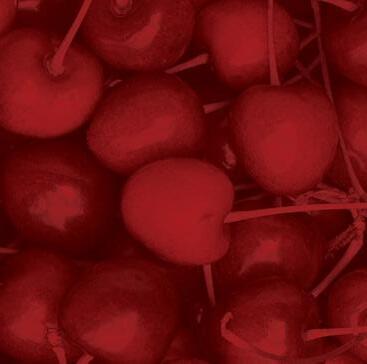







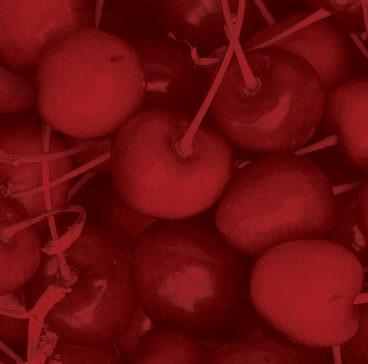


THE SUPER NATURAL SUPER FRUIT
Every super natural benefit in Cheribundi is supported by science and research. With proven benefits like muscle recovery, more effective sleep and immune system support, our natural tart cherry juices are created to work as a key part of a healthy lifestyle. Our proprietary process keeps the highest amount of nutrients in our products, and is also key in providing great taste.
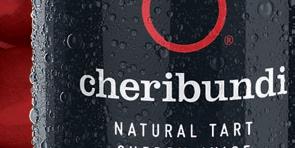

SEE WHAT SCIENCE HAS TO SAY AT CHERIBUNDI.COM



